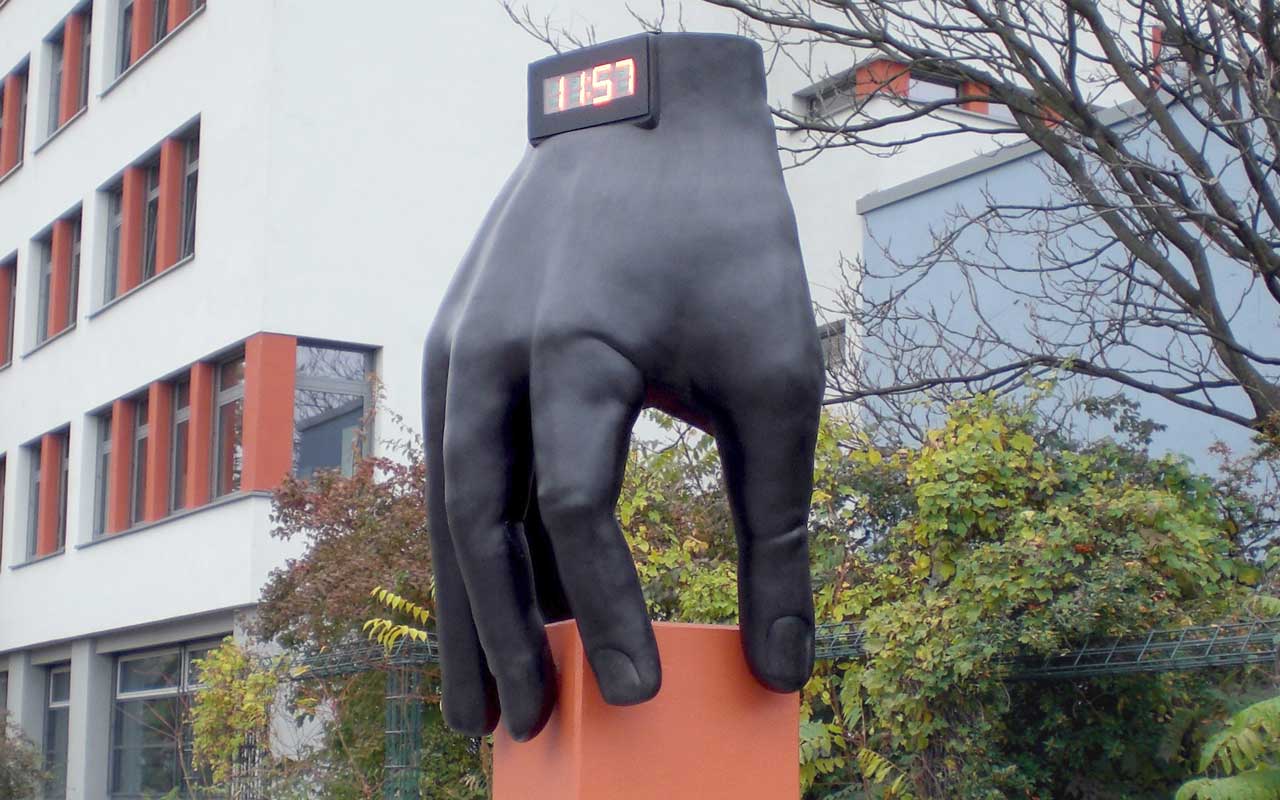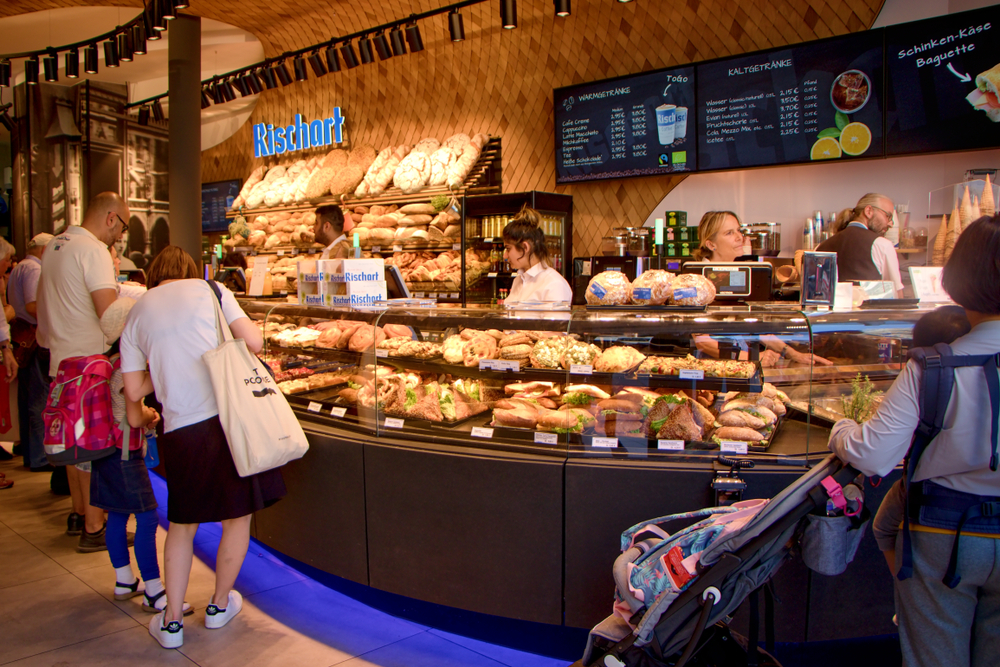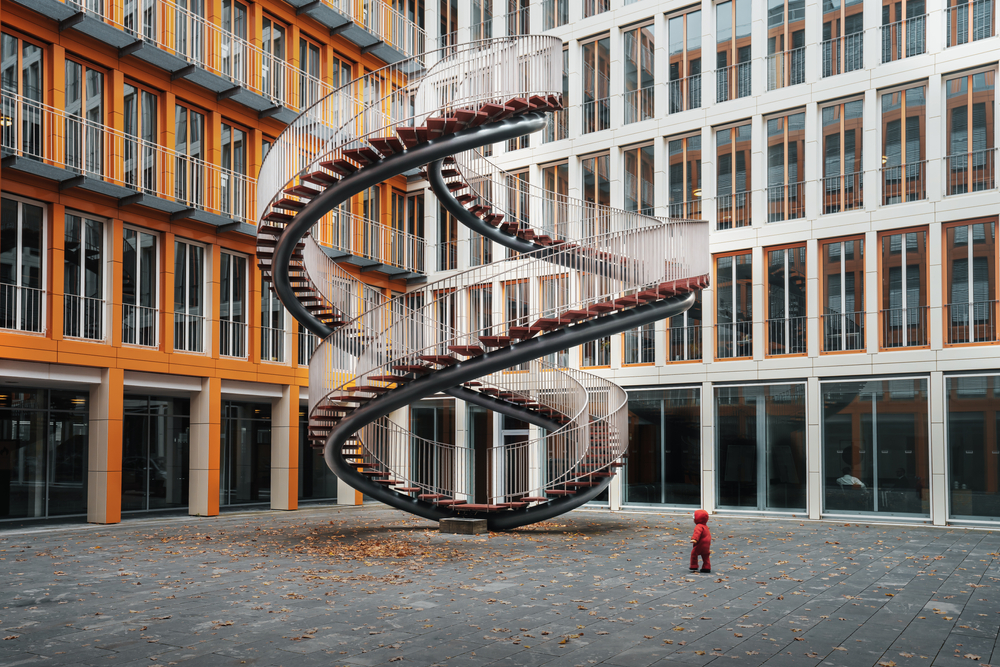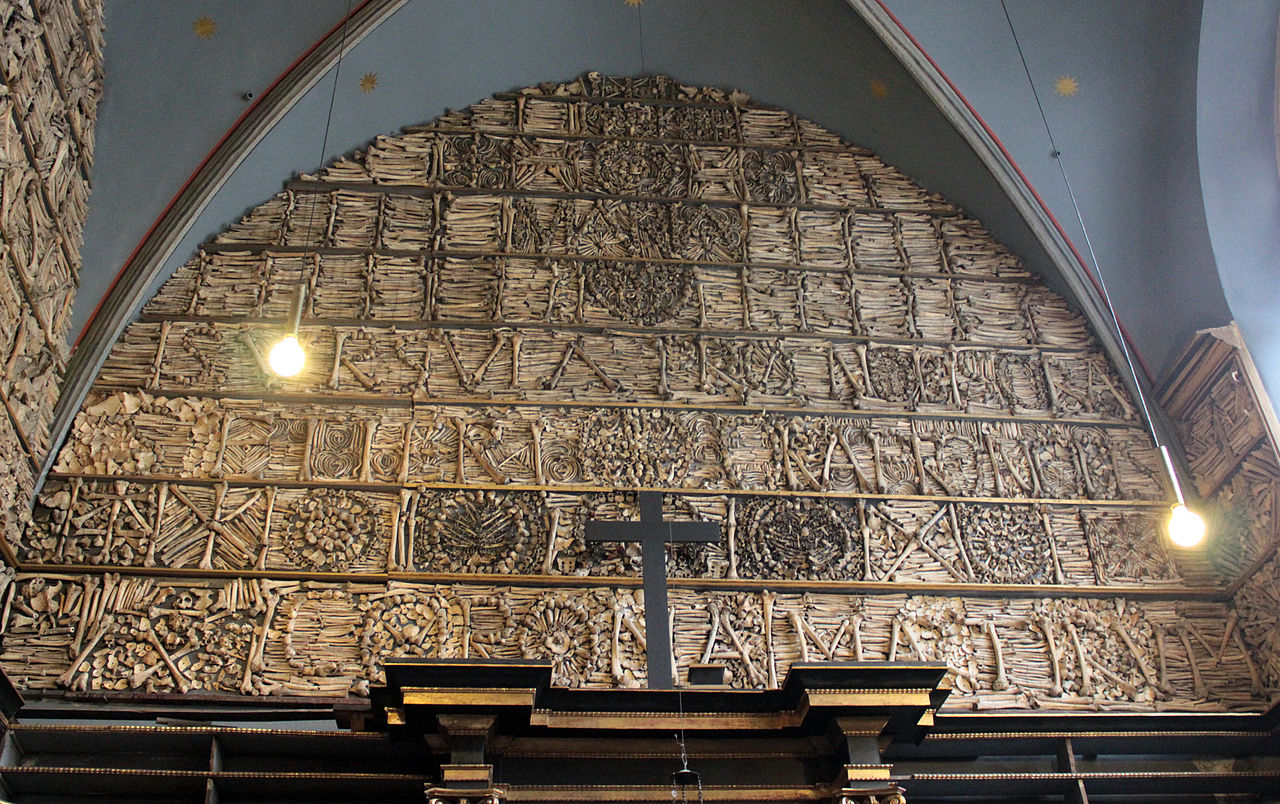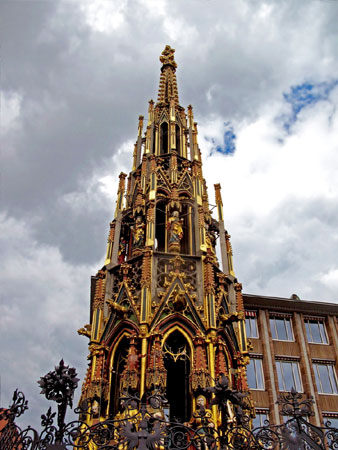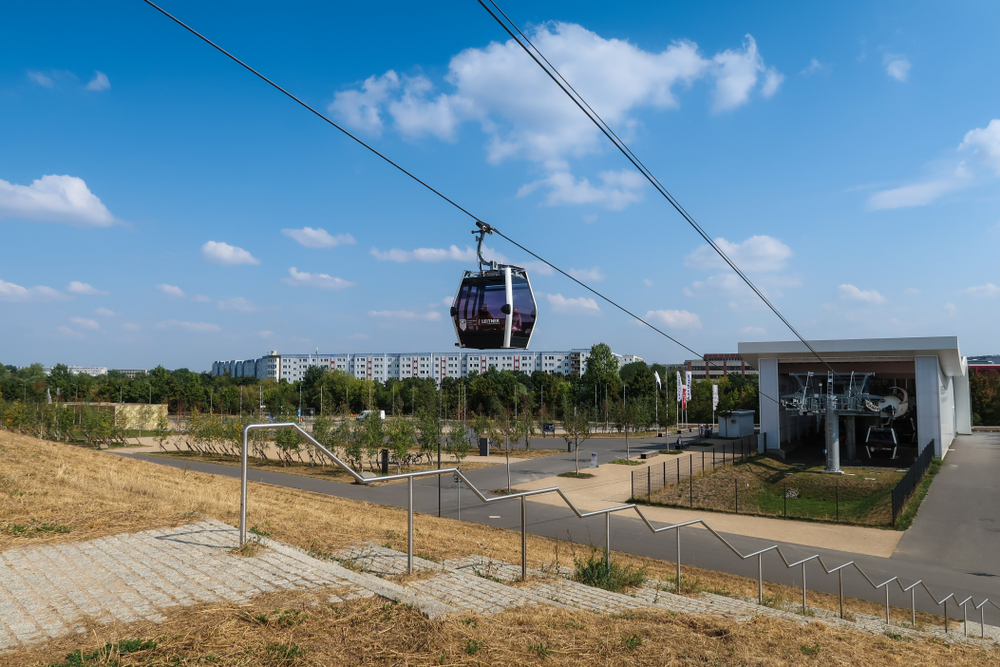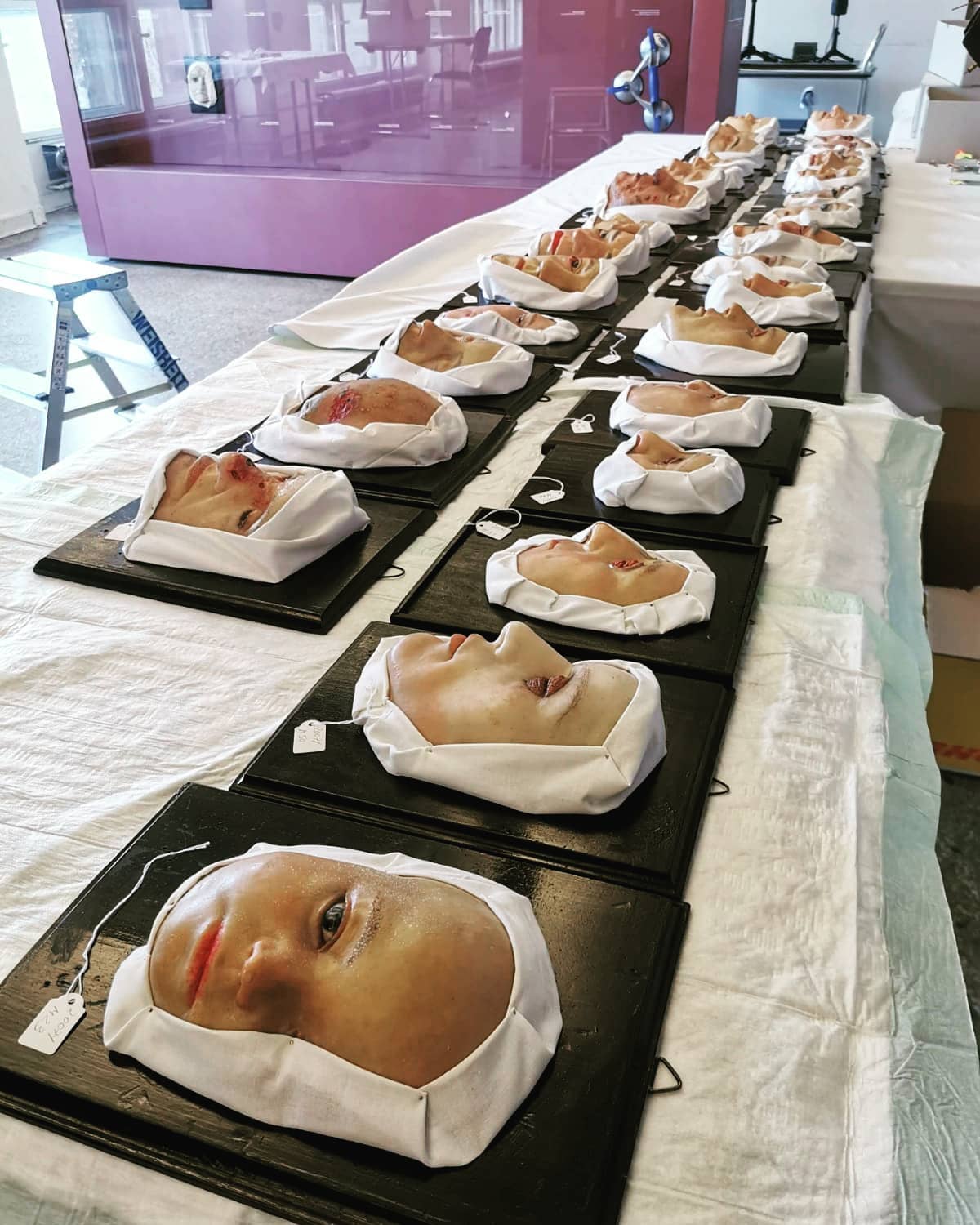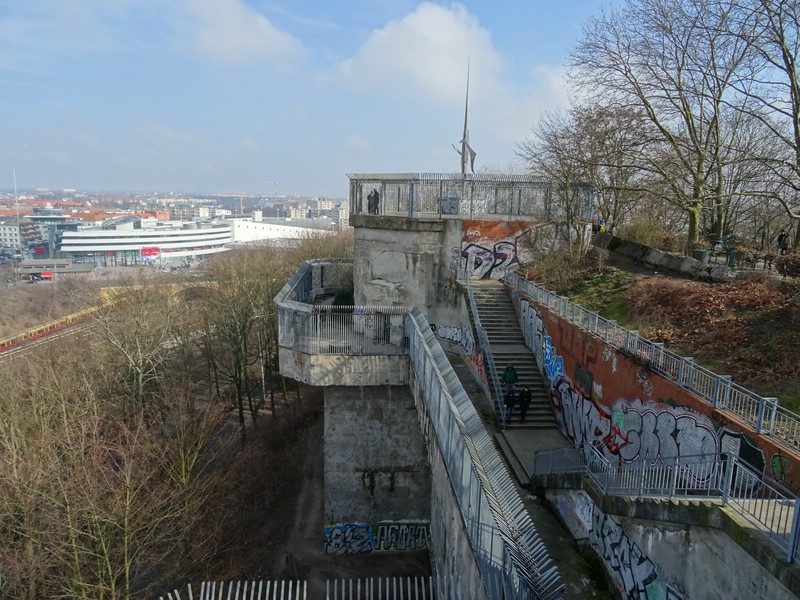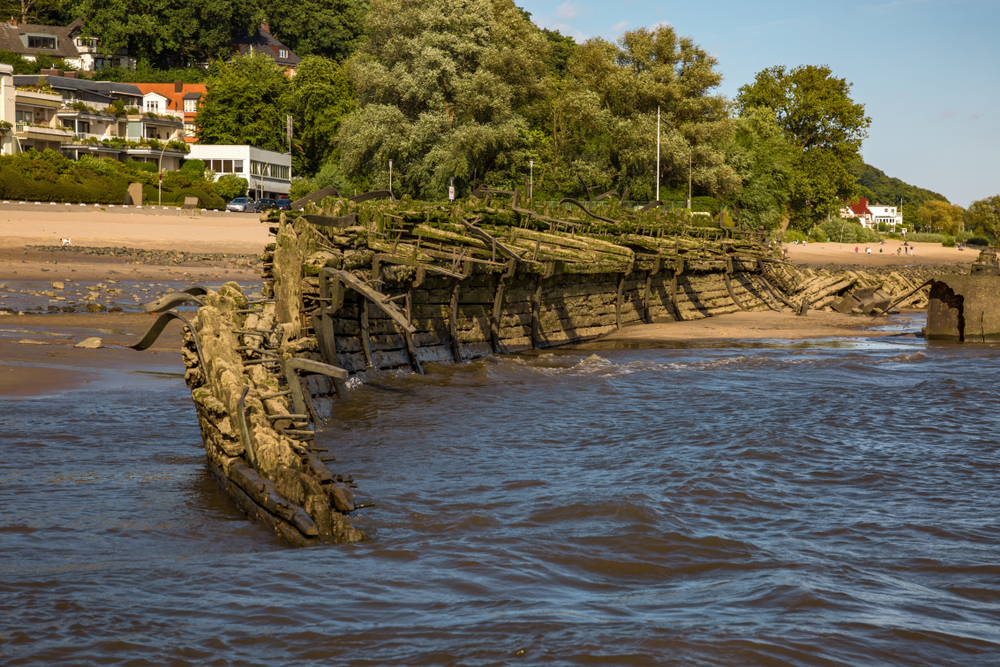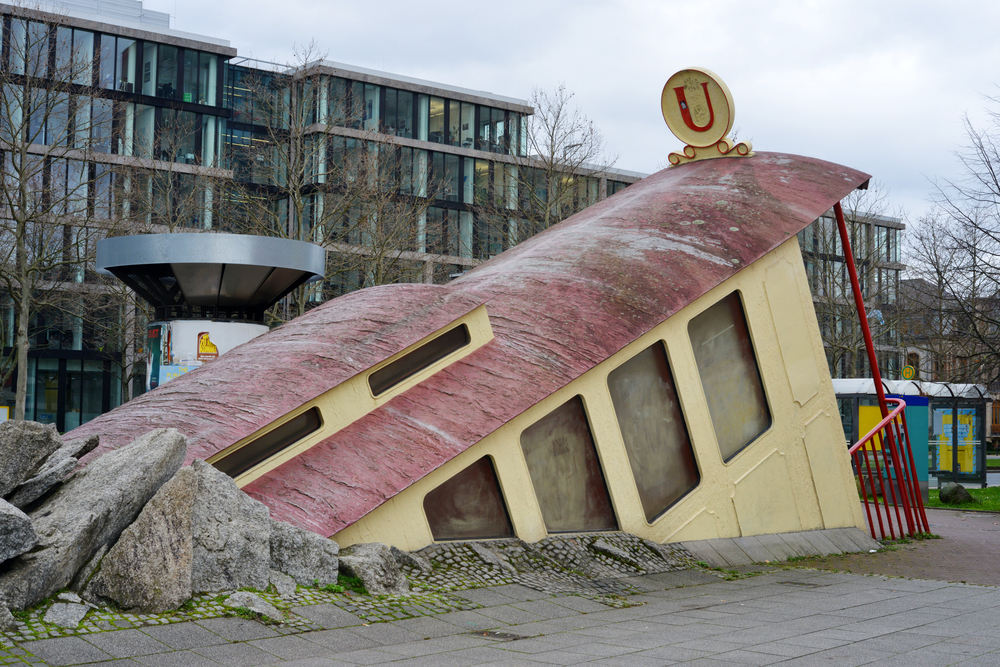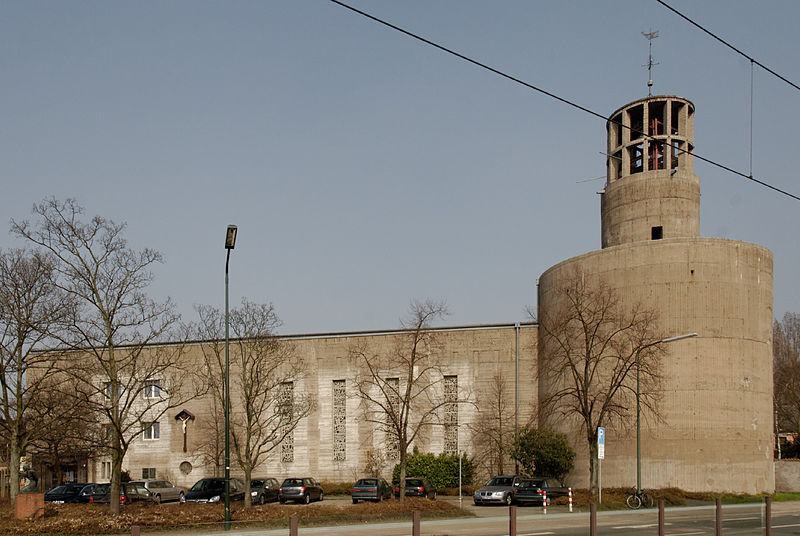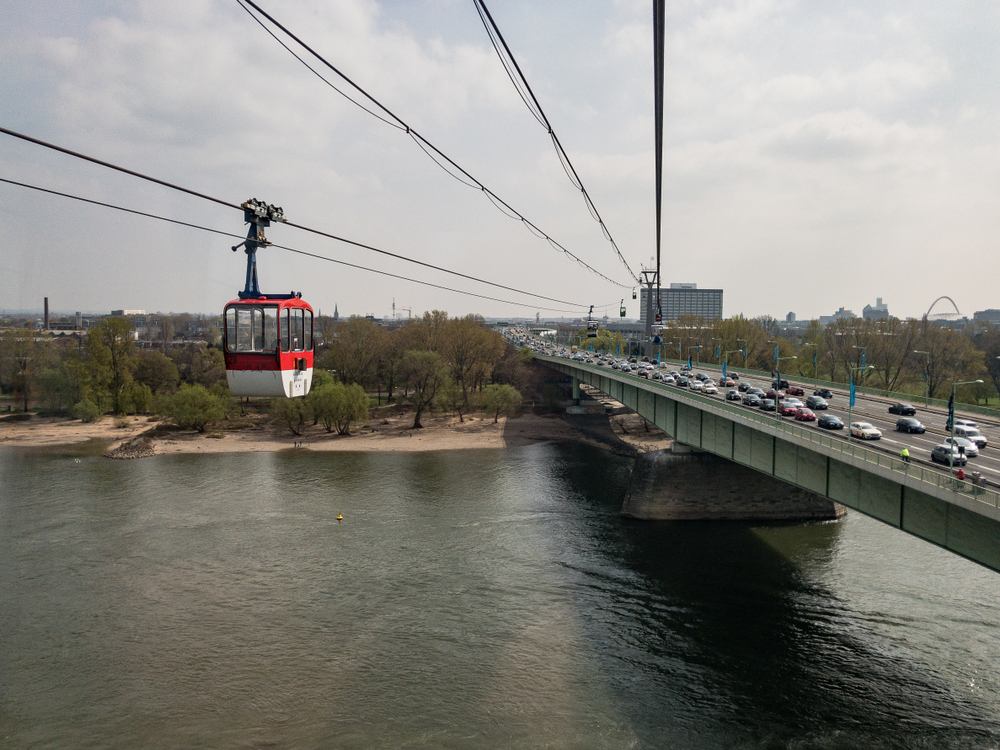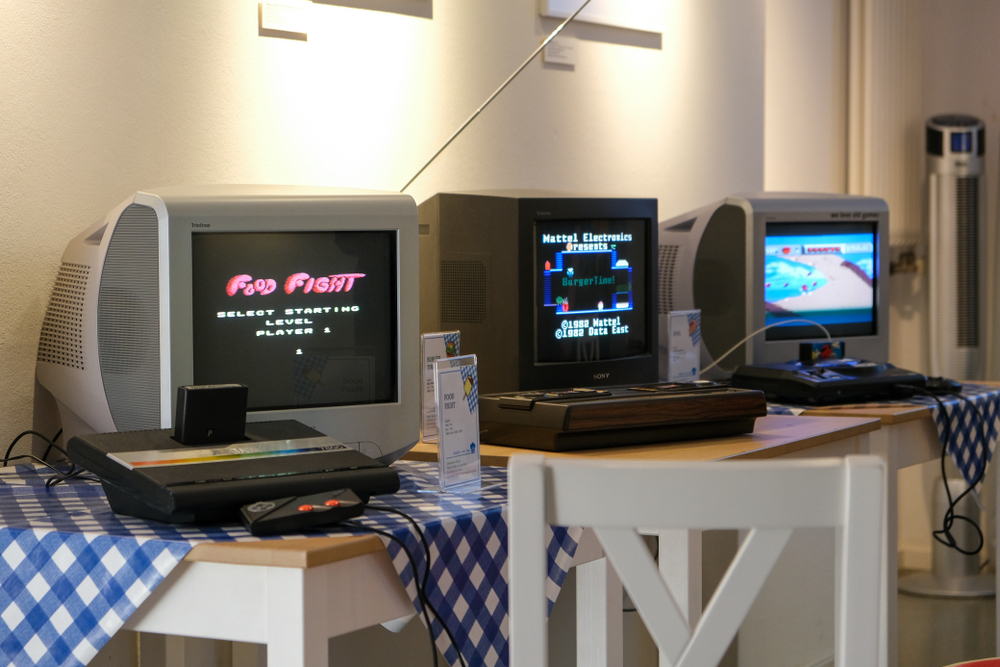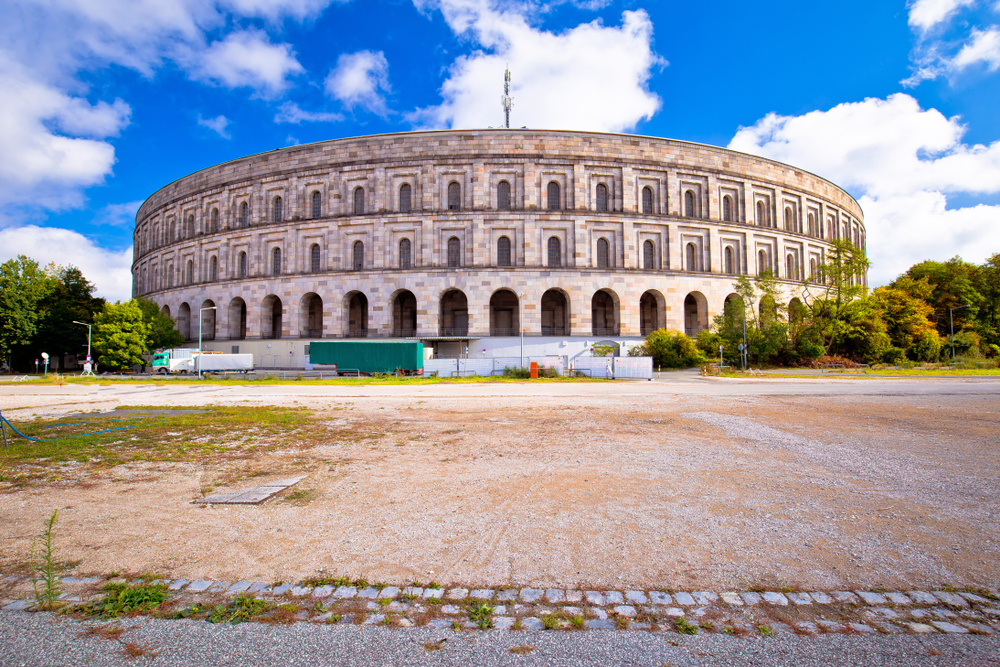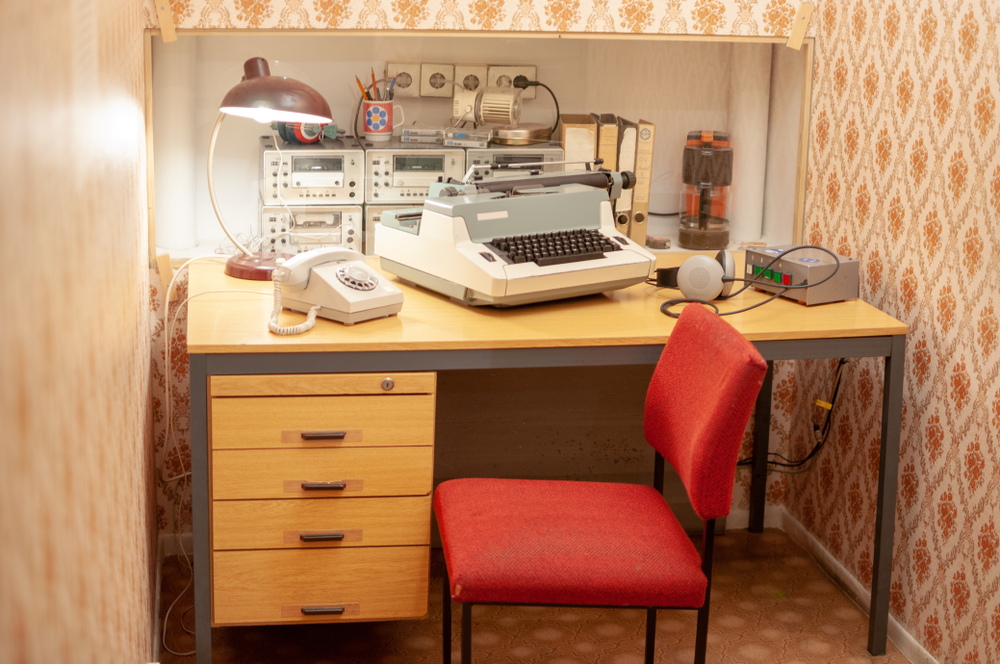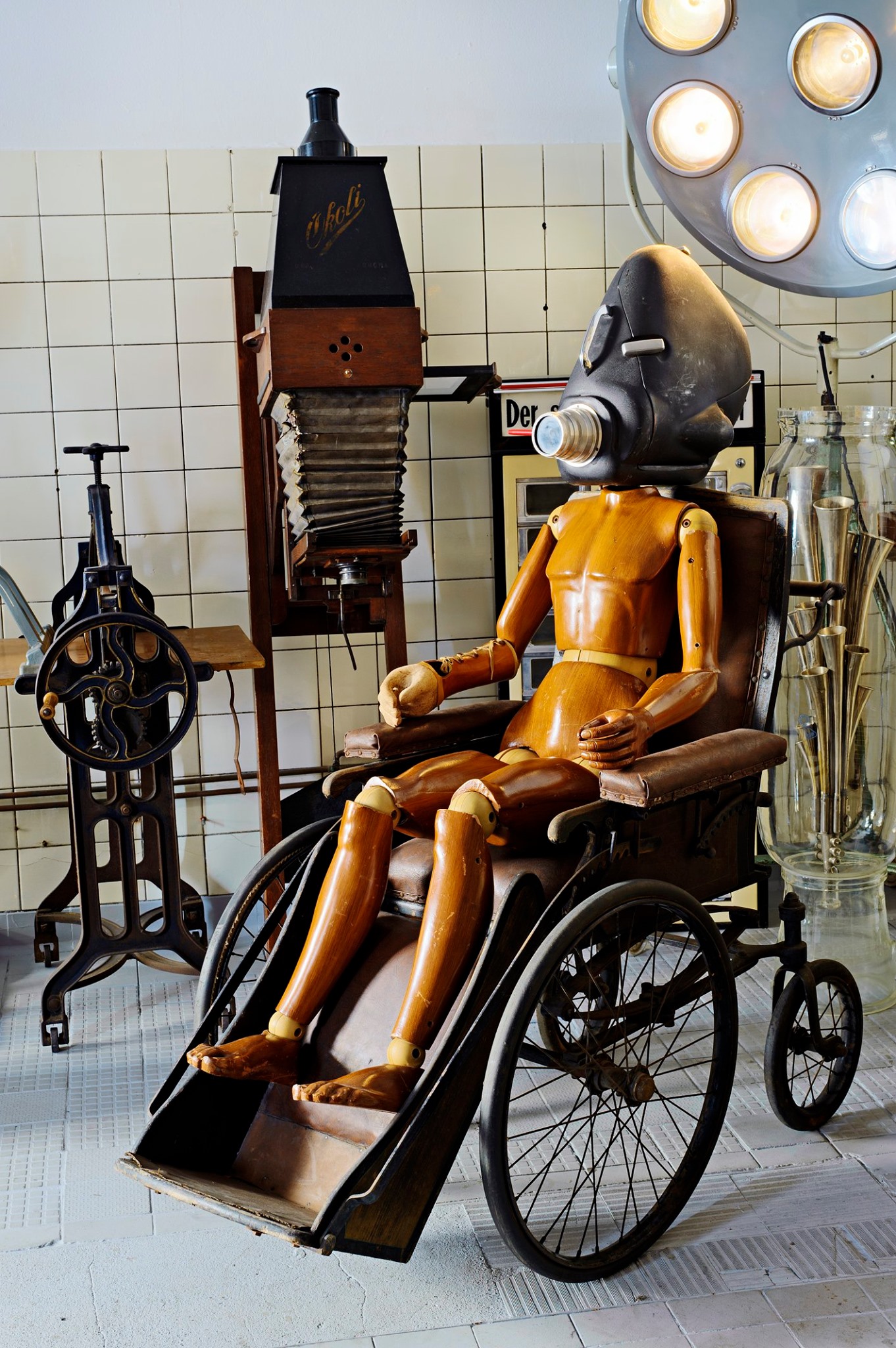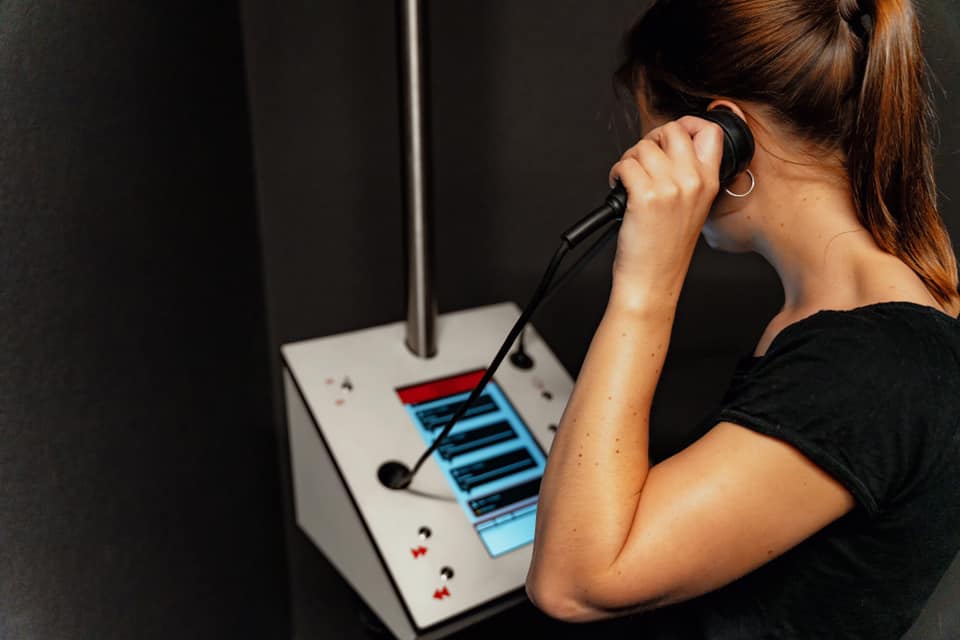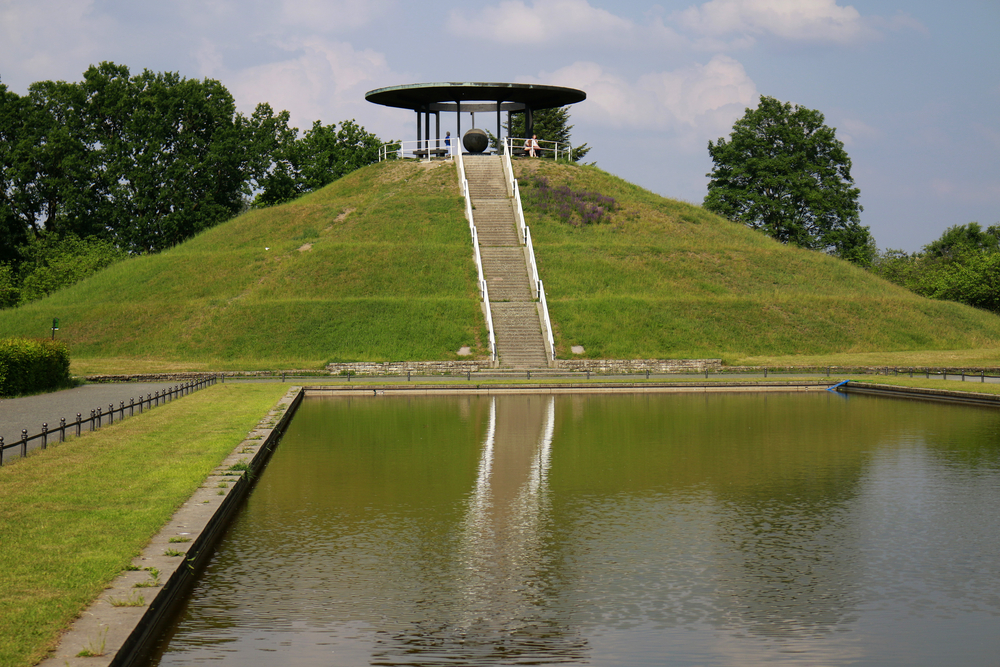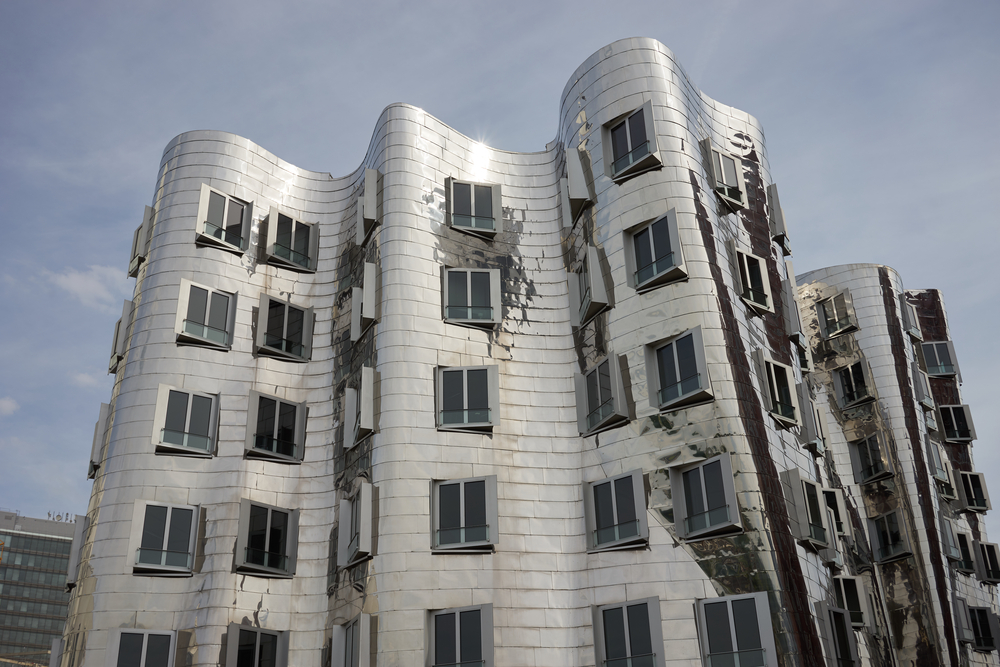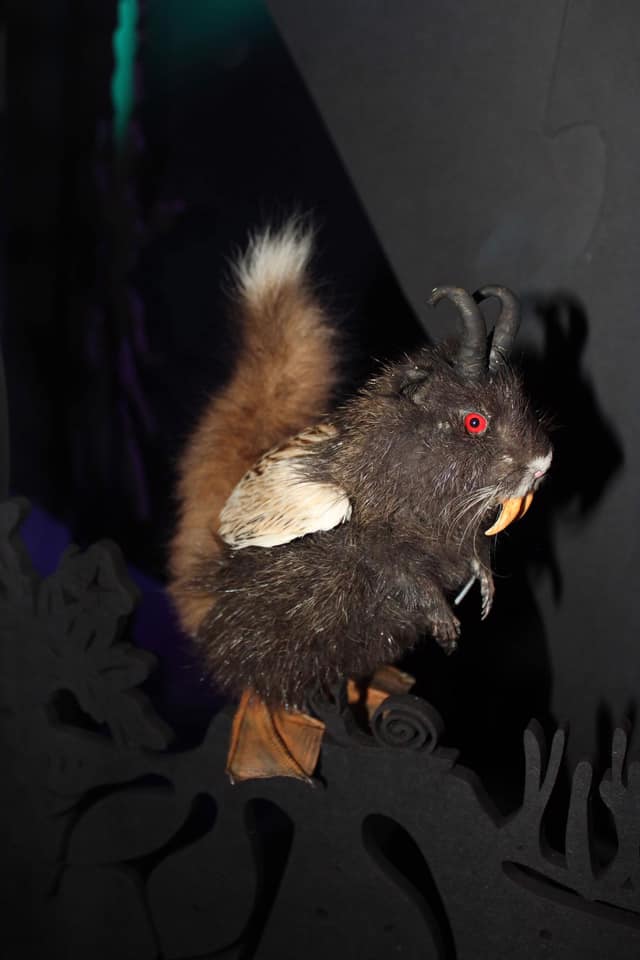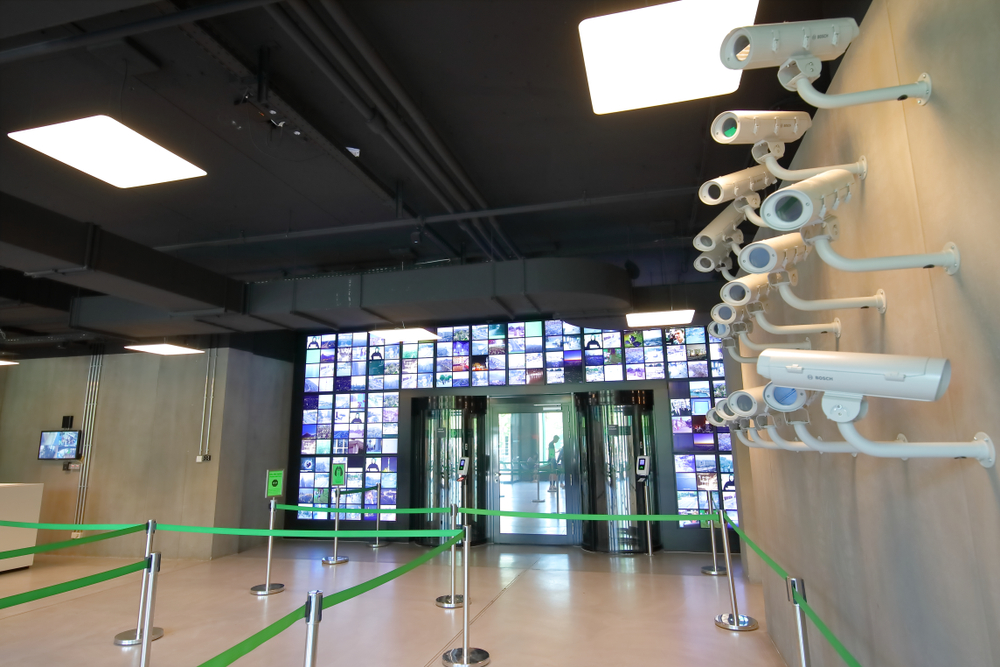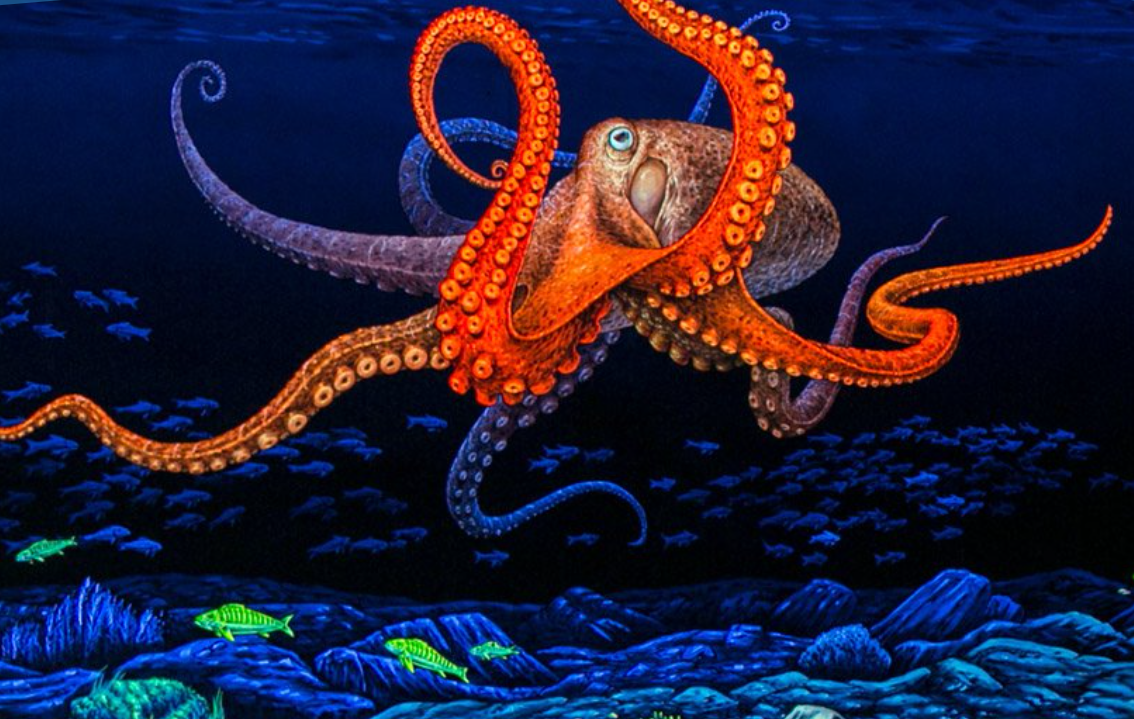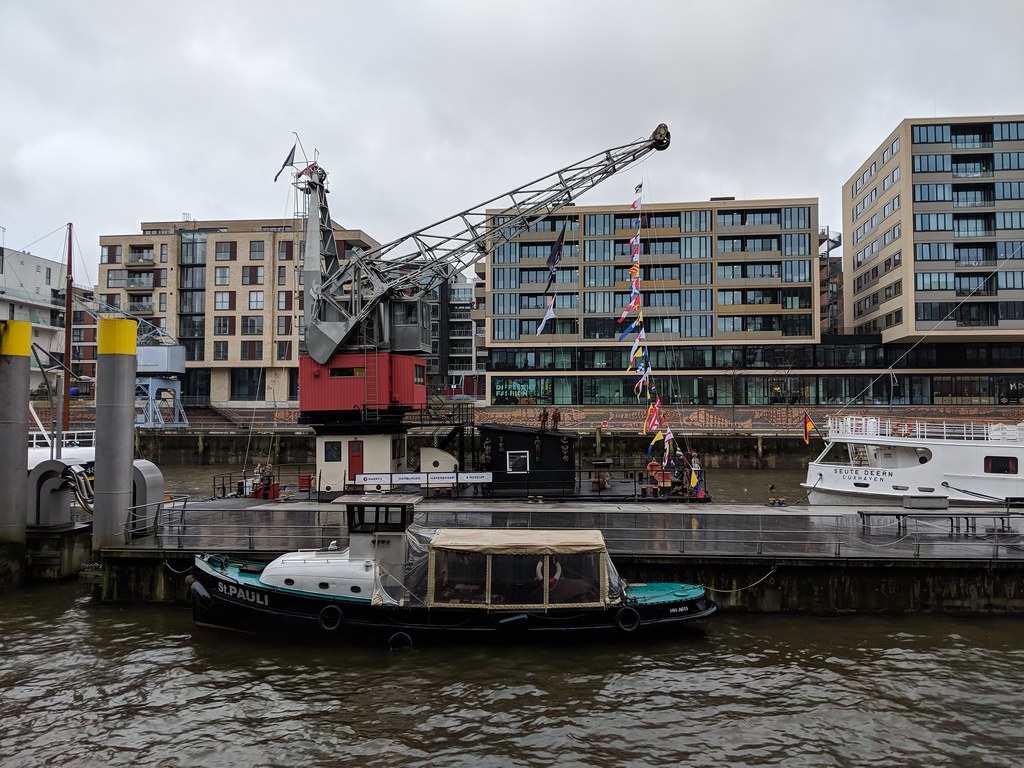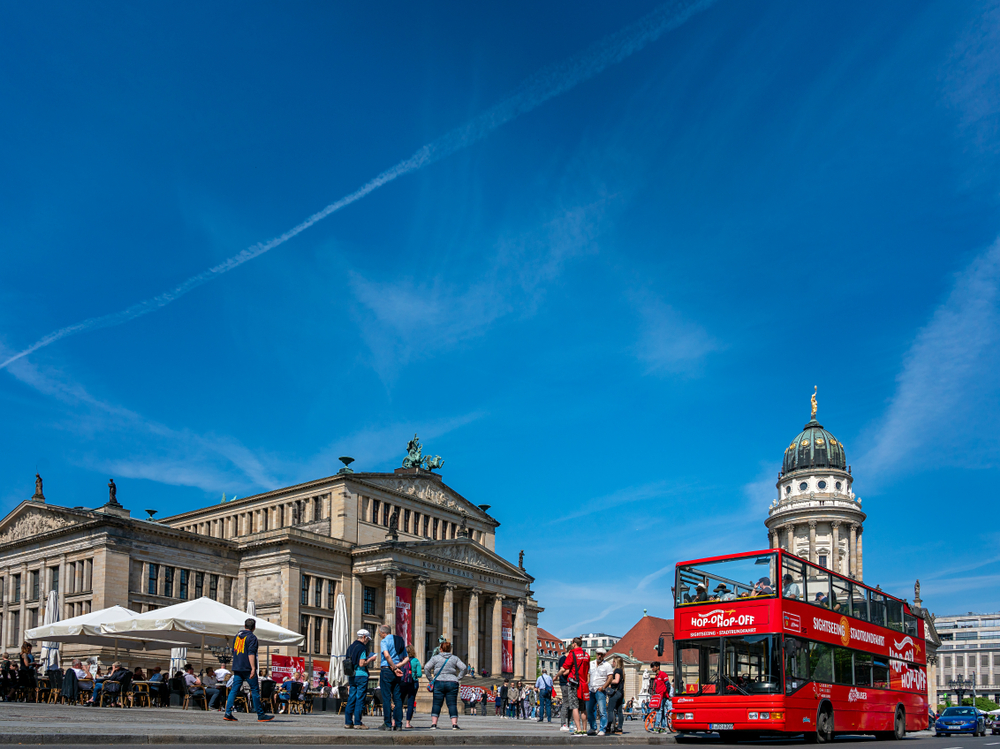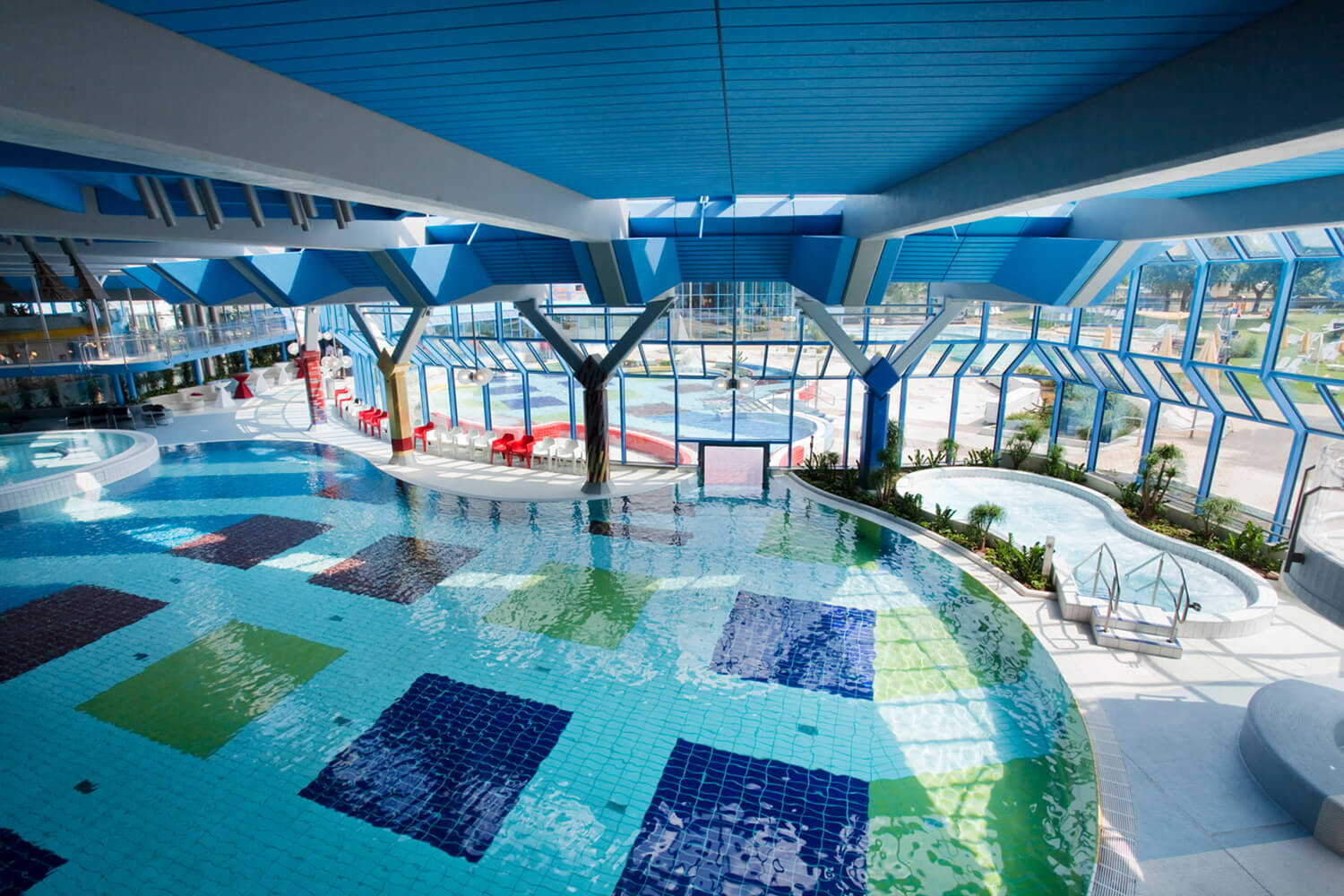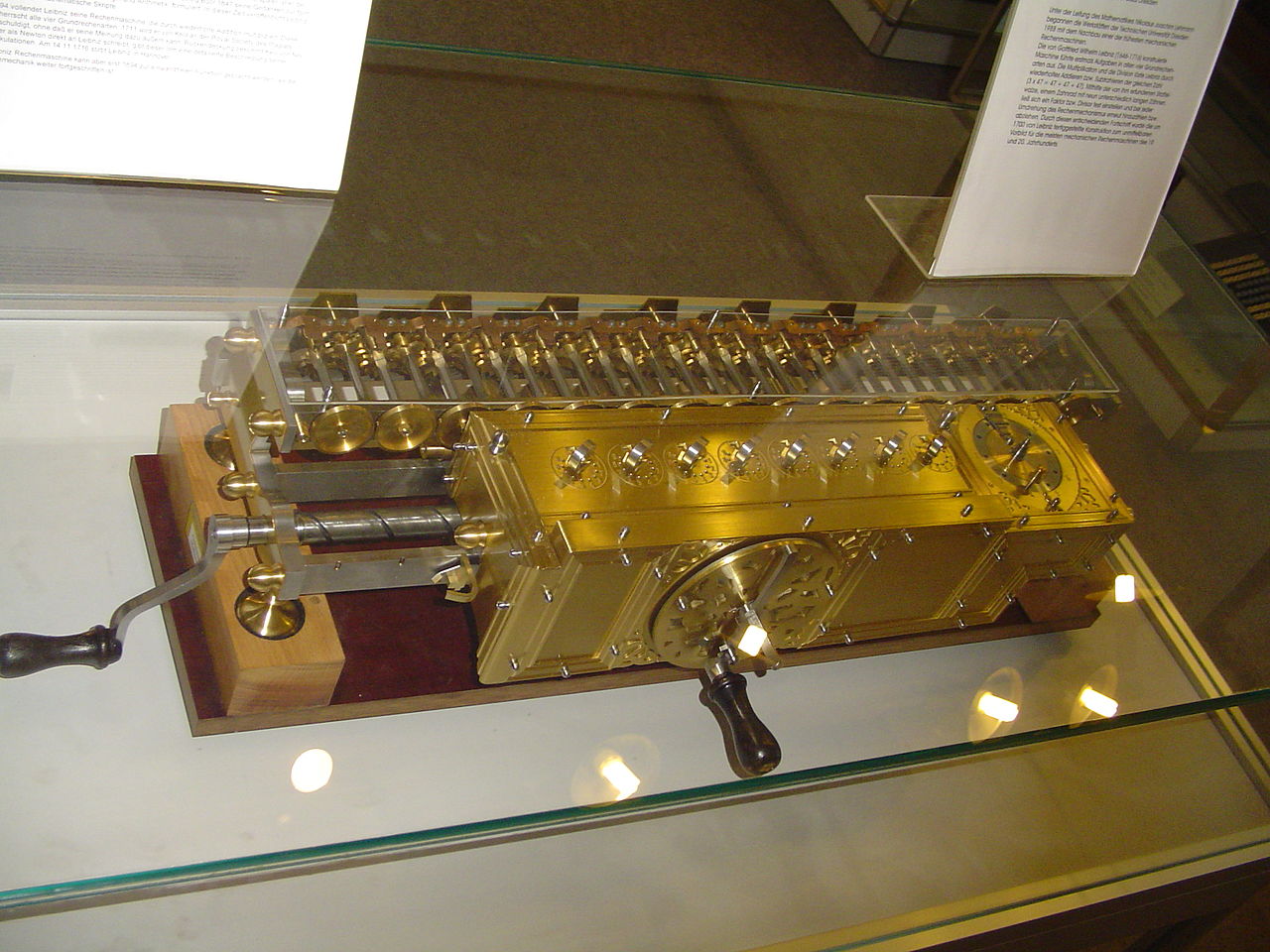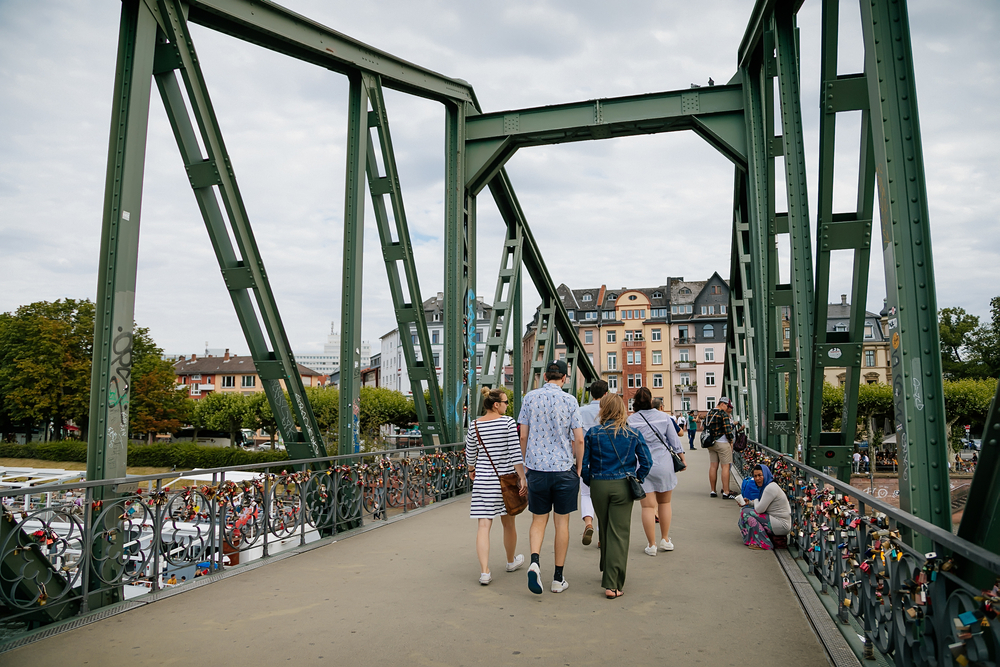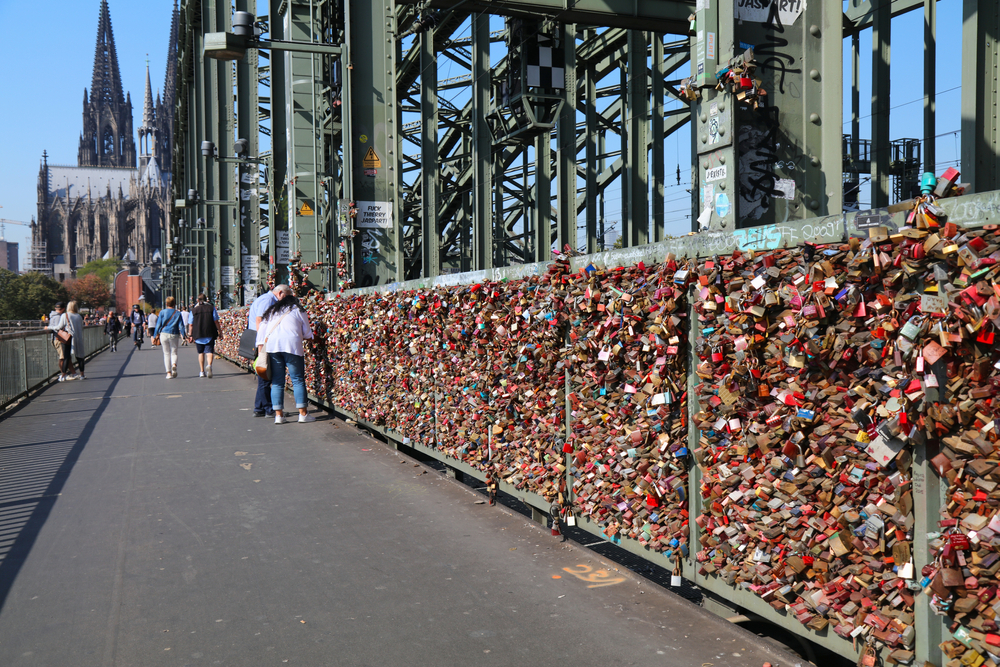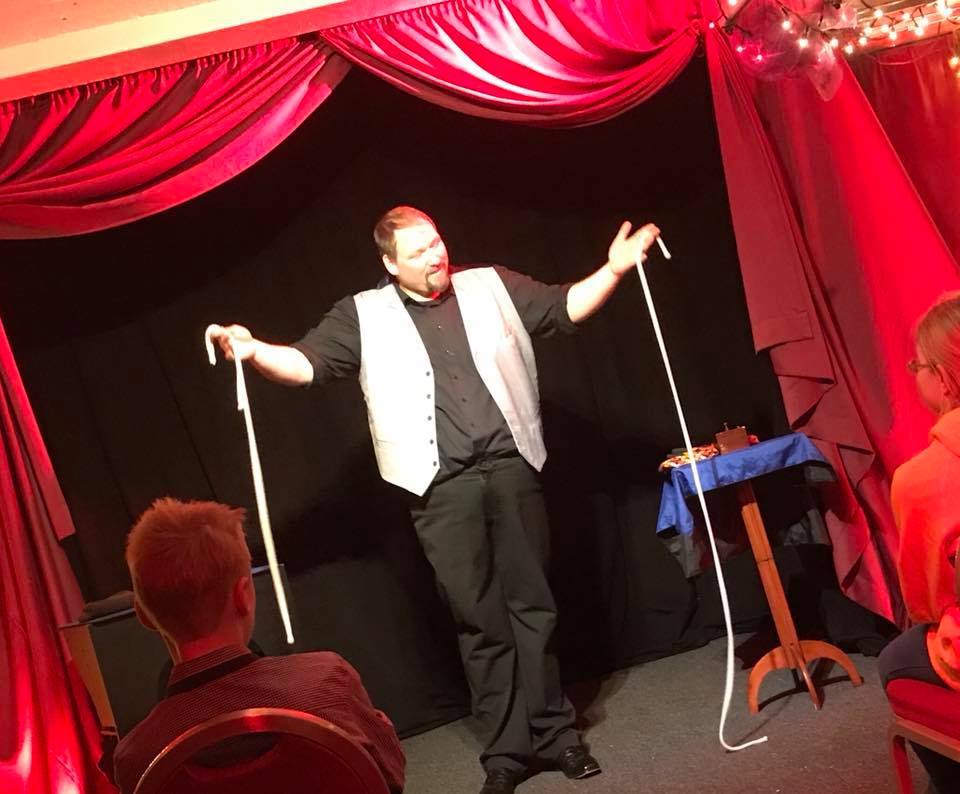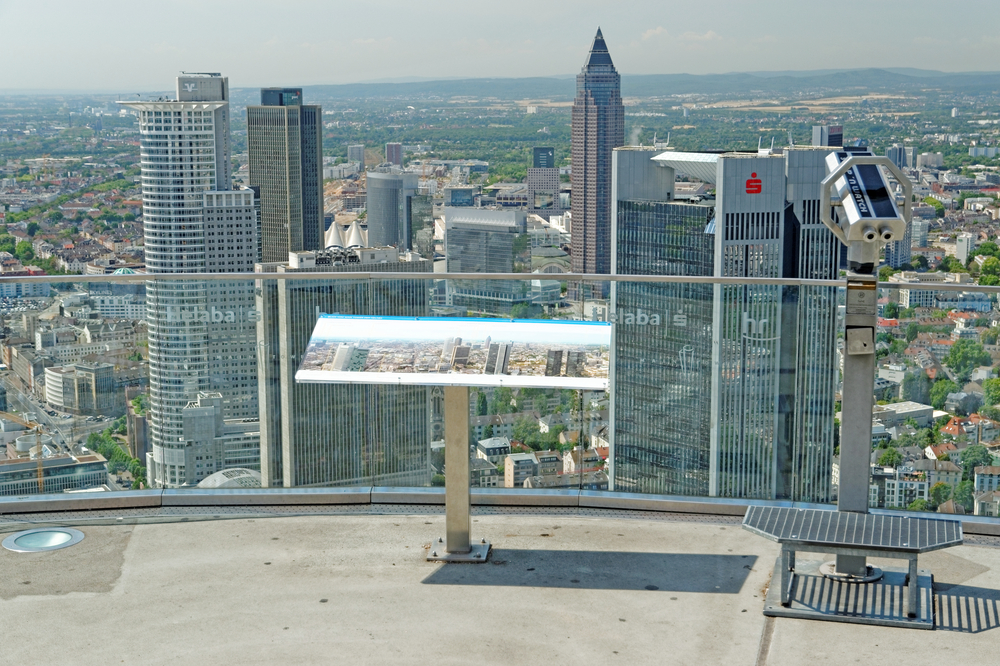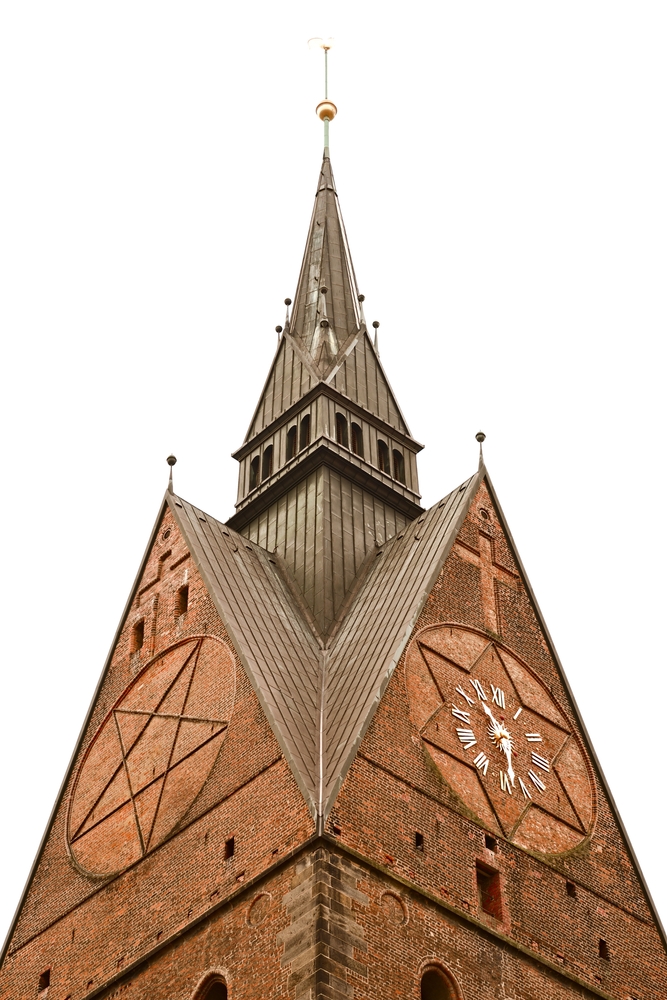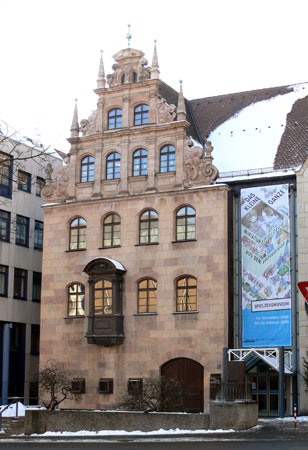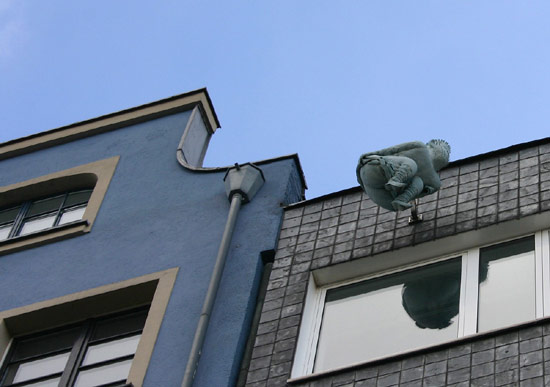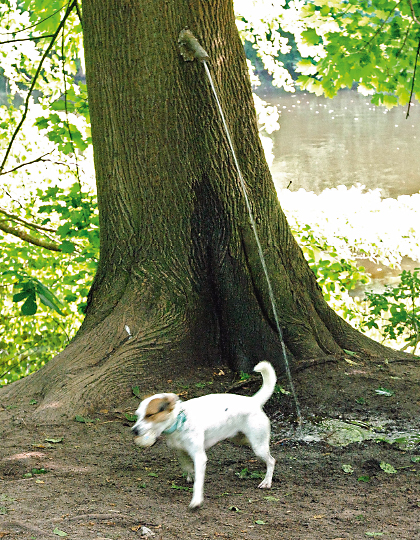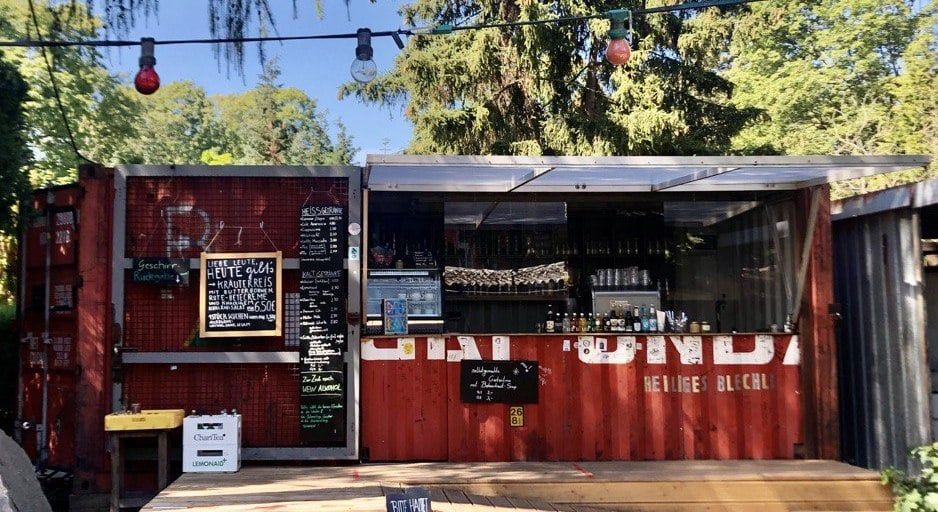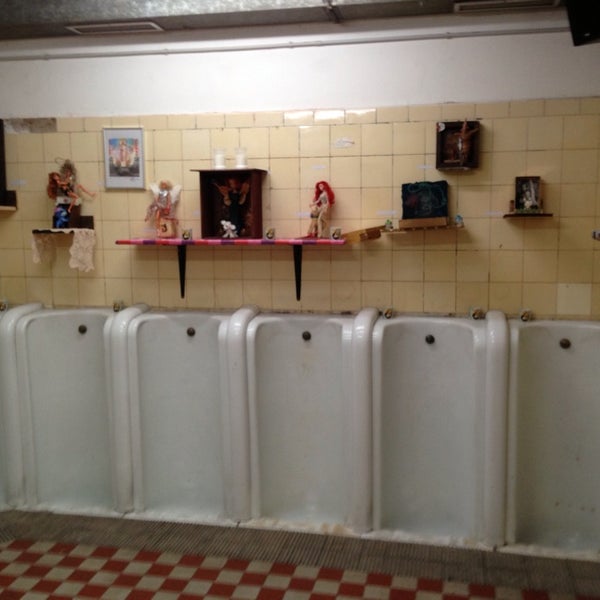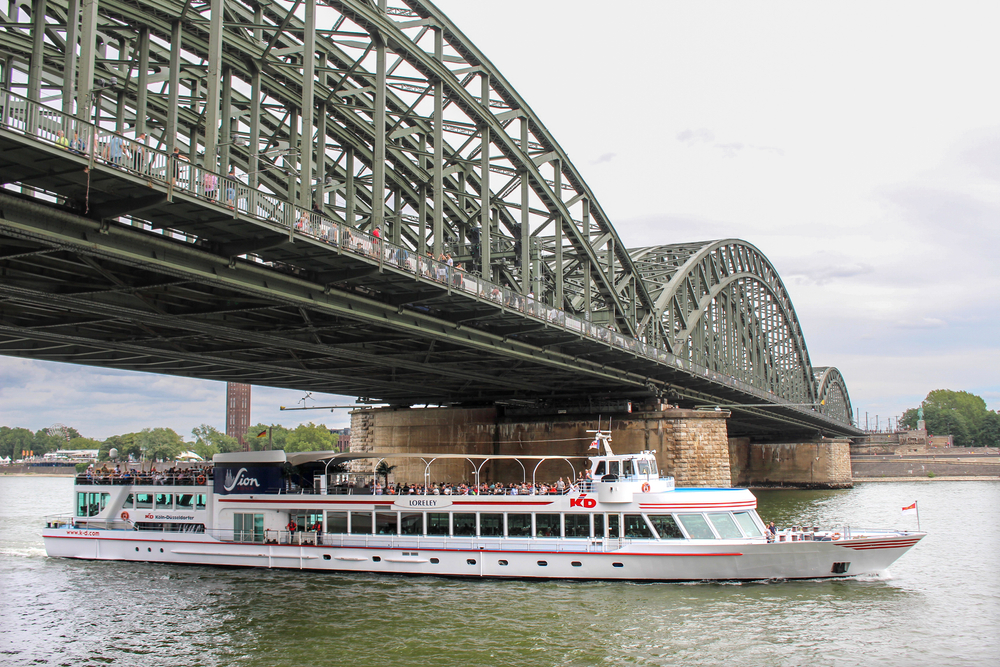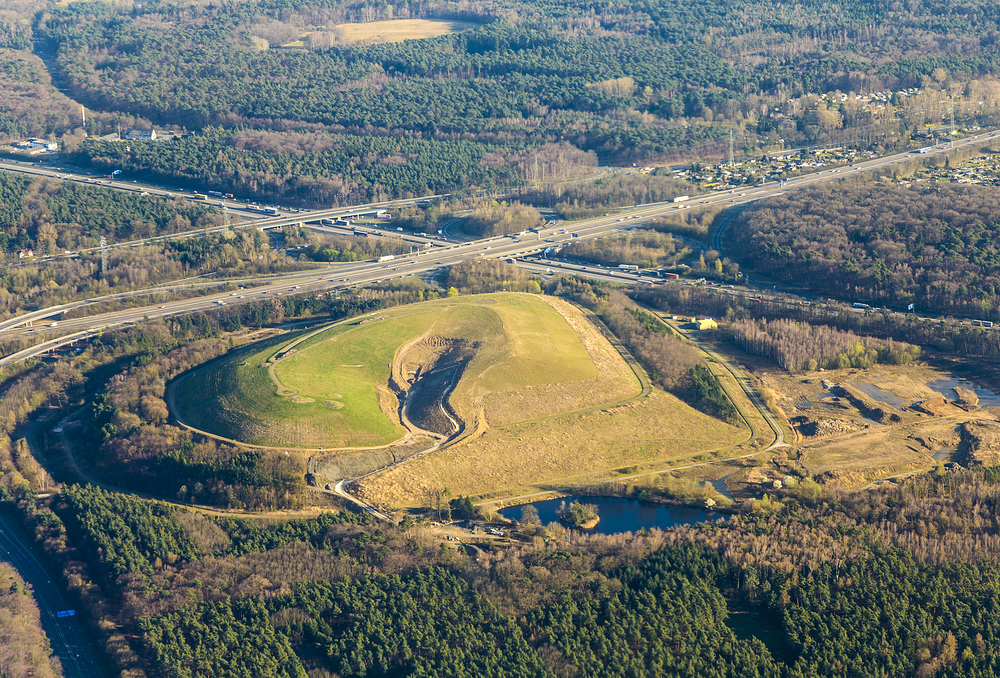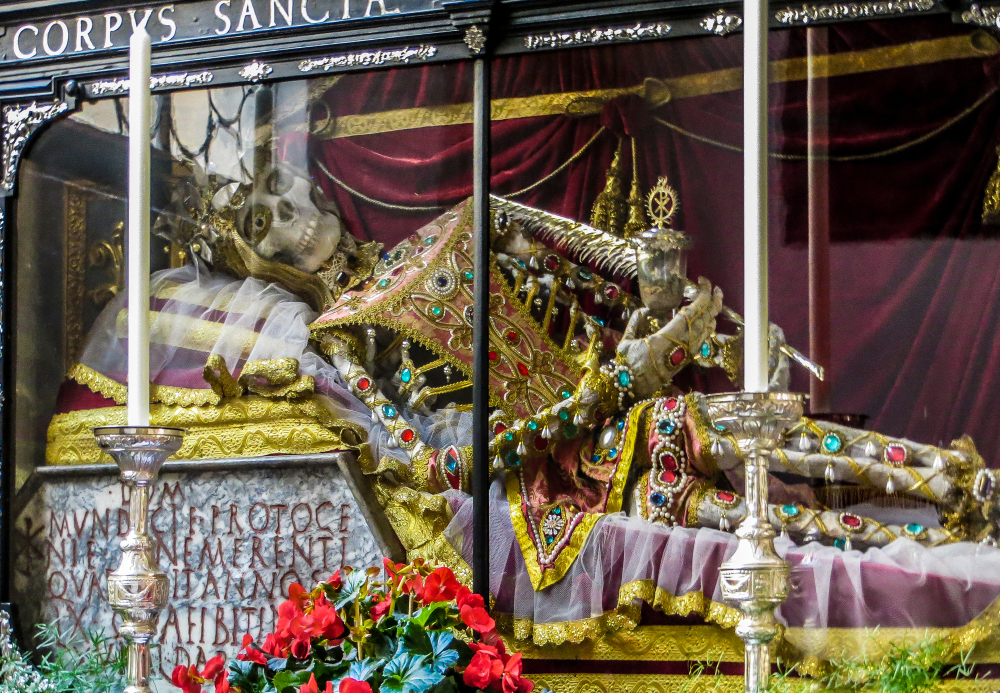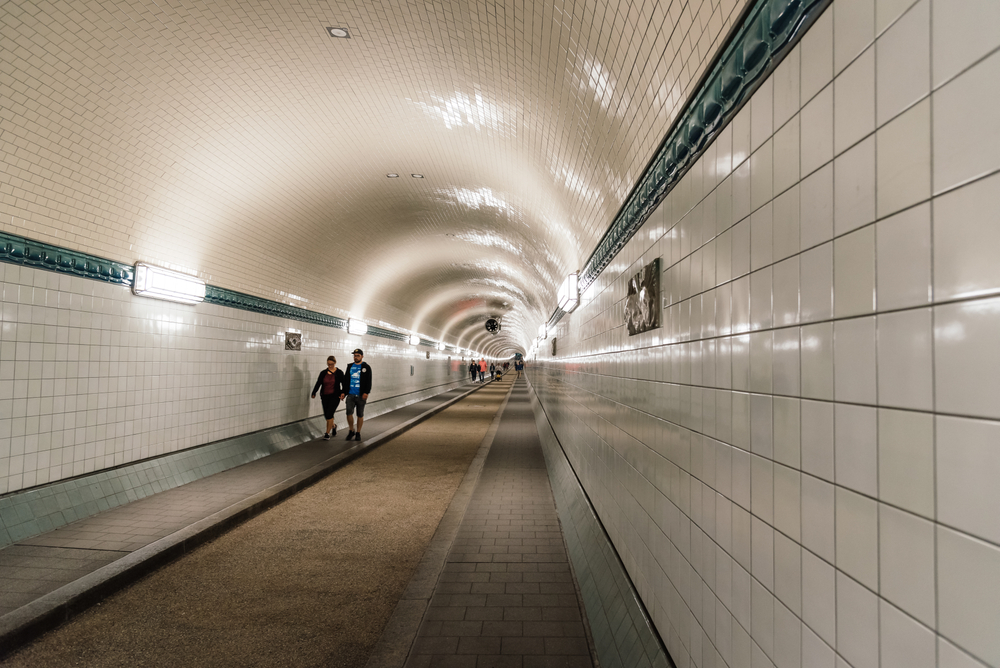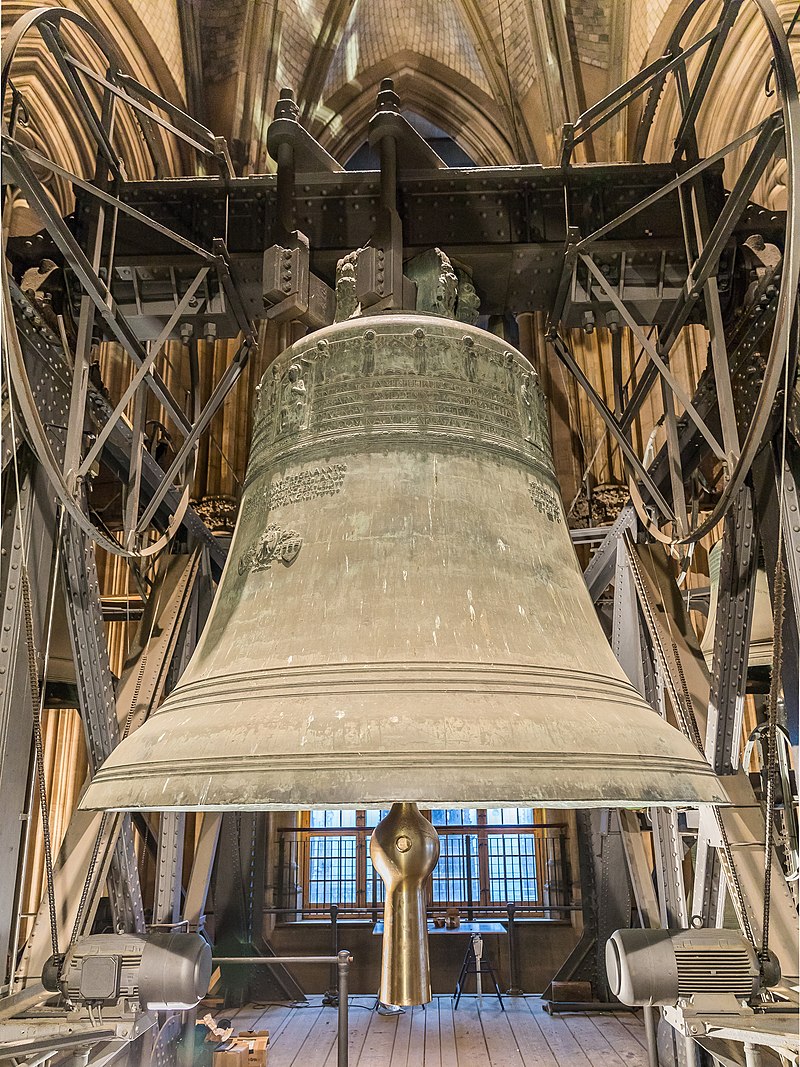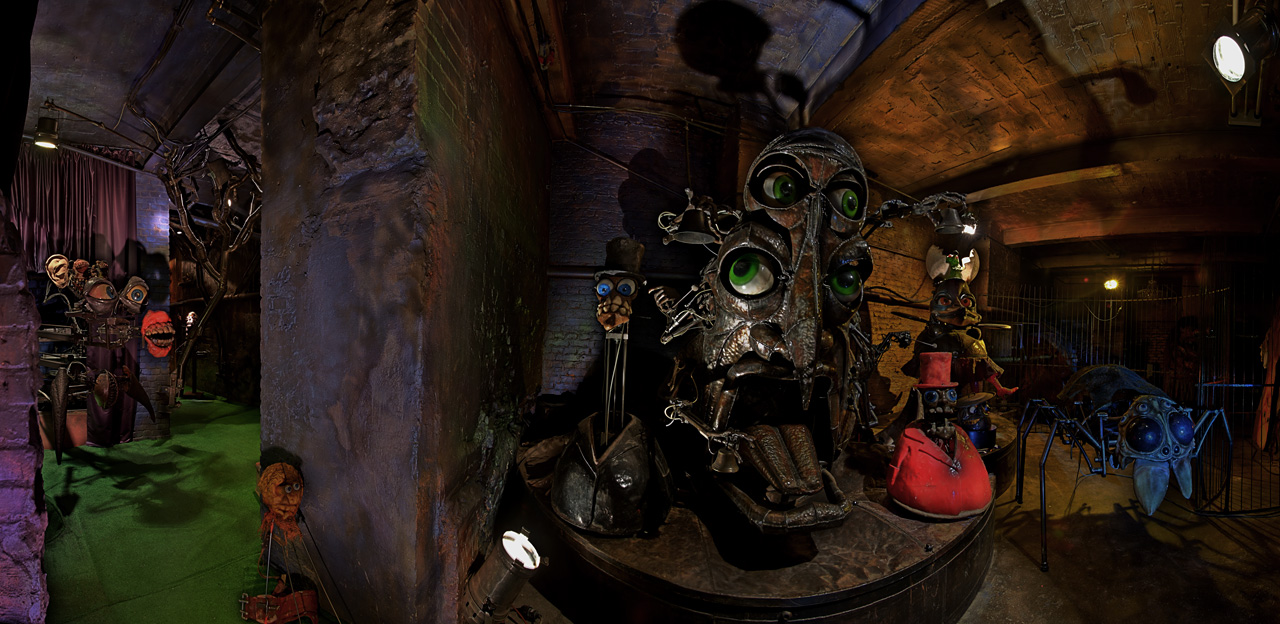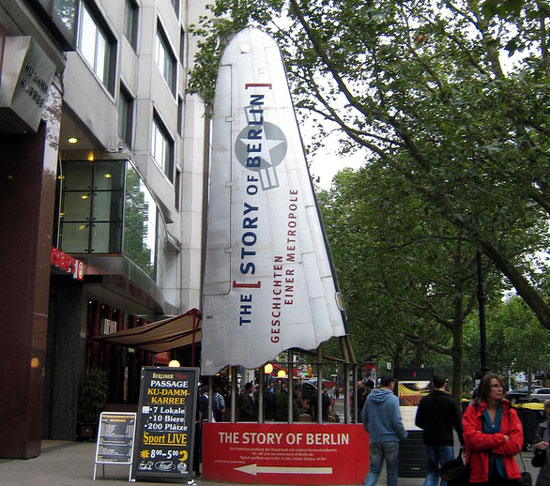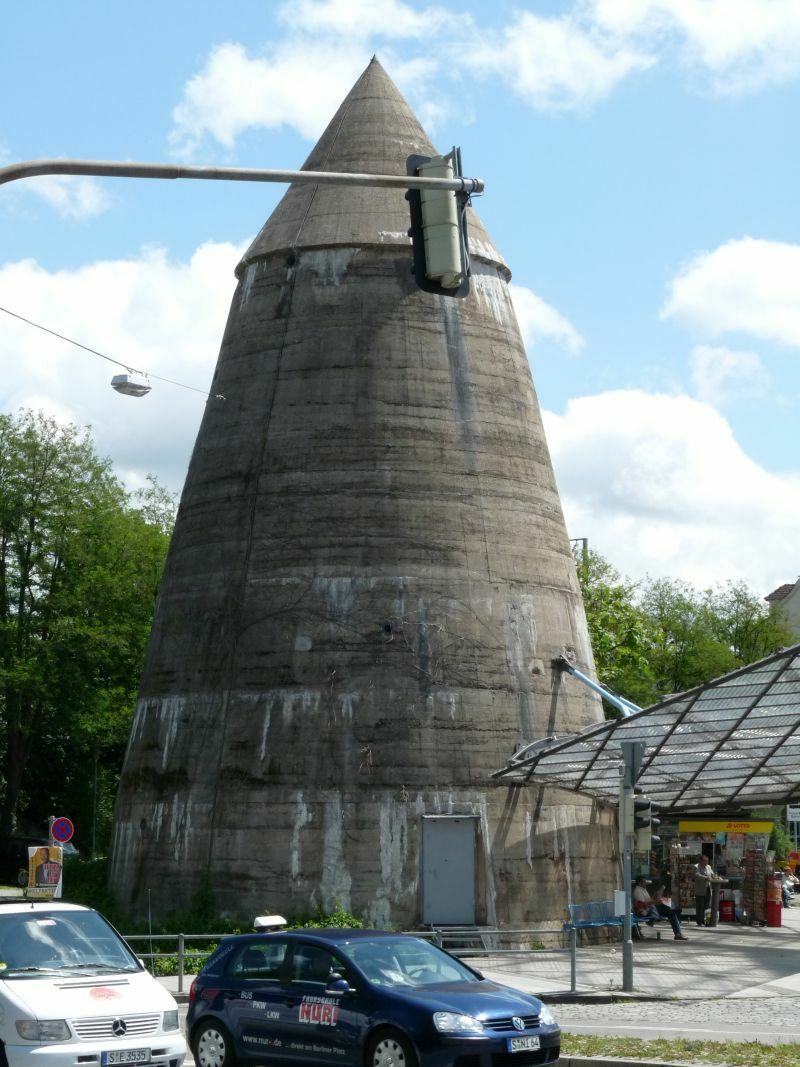Points of Interest
Hand with Watch Sculpture
26 Altonaer Strasse
Berlin, Germany
Located in front of Gymnasium Tiergarten school, the Hand with Watch sculpture may not be standing today had the schoolchildren not raised money for its refurbishment and reinstallation. One of Berlin’s many public sculptures by German artist Joachim Schmettau, The Hand, as locals call it, was first installed at the school in 1975. Over the years, the original watch stopped working, and it got battered to the point of becoming an eyesore, leading it to be taken down in 2008. But the school’s kids, who regularly stated “Meet me at The Hand,” missed the sculptural meeting spot so they fundraised for four years to bring it back. Reinstalled in 2012, the 4.5-meter-tall (14.7-foot-tall) bronze sculpture depicts a giant hand that lightly grasps an orange cube, and the new and improved digital watch still works. The Hand also briefly appeared in the 1983 music video for “Everything Counts,” by Depeche Mode. Find The Hand about a five-minute walk from U9 station Hansaplatz.
Konditorei
Locations throughout Munich, Germany
Everyone will want to stop for “kaffee und kuchen” while visiting Munich. Breaking for coffee and cake, a German tradition, isn’t as simple as it sounds though, as there are dozens of konditorei throughout the city. The confectionary shops, or bakeries, are filled with all kinds of pastries and other baked goods, and the cakes will be especially appealing to children. Among the German specialties to try are linzertorte (shortcake topped with fruit preserves and nuts), Schwarzwälder Kirschtorte (chocolate cake with cherries and whipped cream), obsttorte (glazed fruits atop a cake), Sachertorte (dense dark chocolate cake with fondant icing), or a Berliner (jelly doughnut). So even if you put on a few pounds sampling the sweets, you’ll be sure to walk it off visiting the city’s attractions, including when you search for the next delectable place to have more coffee and cake.
Umschreibung
29 Ganghoferstrasse
80339 Munich, Germany
A sculpture by Danish artist Olafur Eliasson, Umschreibung stands more than 30-foot-tall in the courtyard of Munich’s KPMG Building. Created in 2004 and named for the German word meaning “euphemism,” the double helix-shaped staircase leads to nowhere. The artist’s website describes it as a representation of movement without a destination and a space defined by motion rather than walls. The artwork may inspire people to enjoy this ride called life, which doesn’t have a destination but instead is a continuous journey.
Alpenpark Neuss
Ander Skihalle 1
Neuss, Germany
In the first indoor ski region in Germany you will find everything a ski area needs: gentle slopes with 10 to 18 percent incline for children and beginners as well as a steep upper slope. The 100-meter (328-foot) long, separate beginner's slope is the ideal practice area for anyone who has never been on skis or snowboards. Our four-seater chairlift brings you to the "mountain station" of the 300-m (984-ft) long main slope at an altitude of 110 m (360 ft). Alpenpark Neuss is located a close 20 minutes from Dusseldorf, so pack your skis and snowboards and plan for a full active day. Includes eateries that make it easy to spend a full day hitting the slopes.
Basilica of St. Ursula
Ursulaplatz 24, Nordstadt
Cologne 50668, Germany
The walls of the Basilica of St. Ursula’s Golden Chamber are covered with ribs, skulls, femurs, and other human bones arranged into shapes and even the phrase “Holy Ursula, Pray For Us.” Built on the ancient ruins of a Roman cemetery, the church is adorned with gold and silver relics, including some crowned skulls. The bones are believed to be those of martyred virgins and Romans.
Beautiful Fountain
Schöner Brunnen Hauptmarkt 17
Nuremberg, Germany
Every town needs a glücksbringer. That's a good luck charm available to the loveless or luckless. Nuremberg's is right in the city center, at the Hauptmarkt. On the railing that encircles the dry fountain is a gold ring. Legend has it that those who turned the ring in three complete circles will be lucky in love. The fountain's glücksbringer was installed in 1902 by Albert Leipold, although the Schöner Brunnen is far more venerable. This 19-meter-tall (62-foot-tall) Gothic monument was constructed in the 1390s by stonemason Heinrich Beheim. It's festooned with sculptures representing a series of significant figures: religious icons such as Moses and other prophets, local Nuremberg worthies, a handful of saints, seven Holy Roman Empire electors, Julius Caesar, and a few figures symbolizing philosophy and the arts. Originally crafted in sandstone, the old sculptures have been gradually replaced over the last century with longer-lasting shell lime figures.
Berlin Cableway
IGA Cable Car Blumberger Damm 40
Berlin, Germany
See the world from above and relax with a ride on the Berlin Cableway. Float right over the Wuhletal valley, from Kienberg to Gärten der Welt (Gardens of the World). The spectacular view from up to 35 meters (115 feet) stretches as far as Berlin’s city center and includes mountain and valley views. With a stopover at Wolkenhain, an elevated viewing structure known as the Cloud Grove, the cableway runs a total length of 1.5 kilometers (0.93 miles). If you're lucky, you might even catch one of the six glass-bottomed cars, which hold up to 10 people. The cableway includes three stations, in Hellersdorf, Marzahn, and Kienberg.
Berlin Museum of Medical History
Berliner Medizinhistorisches Museum der Charité Charitéplatz 1
Berlin, Germany
This museum is located at Charité – Universitätsmedizin Berlin, one of the largest university hospitals in Europe. The museum’s permanent exhibition, “On the Trace of Life” provides a path through medical history over the past 300 years. The presentation follows the ever-changing historical view of and into the body, finally arriving at the “recipient” of medicine, the patient, and the possibilities inherent in today’s medicine. The heart of the museum is still the specimen hall, the core of which goes back to the collecting activities of the museum’s founder Rudolf Virchow. Today, there are around 750 pathologic-anatomical wet and dry preparations on display in this area. Various tours are offered in German and English, for a fee.
—Information provided by Berliner Medizinhistorisches Museum der Charité
Berlin Underworld Association Tours
Brunnenstraße 105
Berlin, Germany
Explore parts of Berlin that recall the city’s World War II history and Cold War aftermath. Guided tours are offered in German, English, and other languages, offering insight into the city’s secret side that arose primarily during the years of WWII, 1939–1945. Visit an air-raid shelter complex, bunkers, and nuclear fallout shelter through one of several tours. See a glow-in-the-dark room, fallout suits, diagram of a spy tunnel, and artifacts from the city’s sewer system. Learn about Berlin’s pneumatic-tube mail network and how people escaped from East to West Berlin through underground escape routes, provided by more than 70 tunnels built between 1961 and 1982. Visit Berlin Underworld Association’s website for more information and tour options.
Blankenese Shipwrecks
Hamburg 22587, Germany
Western Hamburg’s beach of Blankenese is a great place to explore some shipwrecks from land. About 300 meters (984 feet) past the lighthouse is where a schooner called Polstjernan as well as parts of old submarines makeup a seawall. At low tide it is possible to walk up to them without going into the water. Also nearby is the stern of a barge named Uwe that sunk in 1975.
Bockenheimer Warte Subway Entrance
31 Senckenberganlage
Frankfurt, Germany
This clever entry to one of Frankfort’s subway stations appears to be a tram that didn’t quite make it to its destination. Appearing as though it were traveling right into the ground, including the appearance of concrete that has been gouged up, this tram is actually the entrance to the Bockenheimer Warte subway station. Designed by architect Zbigniew Peter Pininski, his clever depiction may have appeased some of the city’s disgruntled residents who debated and often opposed new construction to the city’s transport network. Completed in 1986, Pininski was inspired by surrealist artist René Magritte. Find the engaging attraction west of the city center and just north of Goethe University.
Bunker Church of Saint Sacrament
Bunkerkirche Sankt Sakrament 270 Heerdter Landstrasse
Düsseldorf 40549, Germany
During World War II the Nazi government took over St. Sacrament Church’s property and built an air raid shelter that resembled a church. After the war ended, the bunker became a functional church; however, the renovations meant blasting through massive 1-meter-thick (3.3-foot-thick) walls and ceilings. In addition, a concrete bell tower was added in 1952 to match the church’s construction. Today, the structure serves as a Coptic Orthodox Church and is commonly referred to as Bunker Church.
Cologne Cable Car
Kölner Seilbahn Riehler Strasse 180
50735 Cologne, Germany
Step into a gondola and ride high above Cologne and across the Rhine River to take in panoramic views of the city and surrounding region. The crossing is 930 meters (3,051 feet) long and lasts for six minutes, so even the nervous types should be able to manage. A trip on the cable car is a convenient way to reach both the city’s zoo and playground at Rheinpark, both being quality attractions for children of varying ages. Discounts are offered for groups of four or more and for those who plan to take multiple journeys across, which, considering the vantage point and access to kid-friendly attractions, may be a good deal. The cable car does not run during the winter. See the website for hours of operation and fees.
Computer Game Museum
Computerspiele Museum Karl-Marx-Allee 93A
Berlin, Germany
Journey back in time to a happy youth and into the virtual real world of the future while exploring rarities and curiosities from 60 years of video game development. More than 300 exhibits focus on the history of computer gaming. Embark on an entertaining discovery of gaming through time and up to the 21st century. Explore the world of Homo Ludens Digitalis (man the digital player) with the help of many rare original exhibits, playable classics, and media presentations.
—Information provided by Computerspiele Museum
Congress Hall
Kongresshalle Bayernstrasse 110
Nuremberg 90478, Germany
An abandoned coliseum intended to be a rallying ground for Nazis, Kongresshalle was designed by Franz and Ludwig Ruff in 1935. Construction of this massive project was halted due to World War II and never completed. Today, the building houses a museum called the Documentation Center Nazi Party Rally Grounds. Exhibits and audiovisual displays featuring artifacts, documents, and photographs chronicle the rise of the Nazi party leading up to WWII and the devastation it caused.
David Hasselhoff Museum
Circus Hostel
Weinbergsweg 1A
Berlin, Germany
This museum is a tribute to actor and musician David Hasselhoff, located in the basement of the Circus Hostel. Germans love Hasselhoff, perhaps due to the coincidental timing of two events from 1989. That summer, Hasselhoff’s song “Looking for Freedom” topped the German charts for eight weeks, while in November, the Berlin Wall officially came down, eliminating the barrier that divided the city since 1961. The following New Year’s Eve, Hasselhoff performed a concert in front of Brandenburg Gate, near remains of the Wall, said to have been attended by 1 million people. These events all coalesced into an undeniable adulation of Hasselhoff that is conveyed in the small museum. See photos of the concert along with displays devoted to The Hoff’s Knight Rider and Baywatch television series, among other offerings.
DDR Museum
Karl-Liebknecht-Strasse 1
Berlin, Germany
DDR Museum provides a unique visitor experience, making it one of Berlin’s most popular museums. Engage all your senses to enjoy an immersive experience of everyday life in the former East Germany, which was known as the Deutsche Demokratische Republik (DDR). Covering a range of topics based on sound academic research—everyday life, the Berlin Wall, the Stasi, and much more—the exhibition encourages visitors to touch, feel, and interact, so as to gain a fun and rich understanding of the past. Explore all aspects of life behind the Berlin Wall and the workings of the state—the DDR at a glance.
—Information provided by DDR Museum
Design Panoptikum
Poststraße 7
Berlin, Germany
The website of Design Panoptikum refers to it as a “surreal museum of industrial objects,” which is a tip off to what lies within. The creations are quirky, some spooky, some whimsical, and all made from industrial objects derived from the aviation, medical, and film industries. Some figures have a hybrid human-monster quality, with many lounging on furniture under strangely shaped lamps.
Dialog Museum
An der Hauptwache B-Ebene, Passage 10
Frankfurt, Germany
Gain a greater appreciation for the power of sight within this museum, as it conveys what it’s like to be blind. Visually impaired guides escort visitors through exhibits that are in pitch black, meaning you’ll need to rely on your other senses. Find themed rooms and exhibits including the Soundspace sound installation and Dialogue in the Dark. Get the feeling of what it’s like to cross a road without your eyes to guide you, a seemingly mundane event that is entirely different in the dark.
Fly Mountain
Fliegeberg 59 Scheelestraße
Berlin, Germany
An artificial hill built as a literal jumping off point for a man who patented 25 types of gliders, even inspiring the Wright brothers’ aviation dreams, Fliegeberg (Fly Mountain) was created in 1894 by engineer and flight pioneer Otto Lilienthal near his Lichterfelde home. The 15-meter (49-foot) hill allowed him to conveniently test the various types of gliders he designed. Some test flights drew crowds to the spot, and many flights were photographed. Lilienthal was nicknamed the “Glider King” as word of his test flights spread across the world. Four years after his 1896 death, the result of a glider accident in which Lilienthal broke his neck, a park was created around Fly Mountain. In 1932, a monument to his memory was added at the hill’s peak, a bronze globe surrounded by a circular pavilion. The monument was designed by architect Fritz Freymüller and is reached after ascending a flight of stairs. The original globe was melted down during World War II and then replaced by another that is inscribed with the paths of the famous flights Lilienthal helped inspire.
Gehry Buildings
Neuer Zollhof 2–6, Unterbilk
Düsseldorf Harbor
Düsseldorf, Germany
Three shiny and curvy-shaped buildings along the banks of the Rhine River are sure to catch the eyes of those passing by on Düsseldorf Harbor. Designed by American architect Frank Gehry, the modern-looking buildings’ have a wavey appearance, and their exteriors are covered in metallic stainless-steel with white-framed windows. The tallest of the buildings has 14 stories and is nearly 50 meters (164 feet) tall. Completed in 1998, the buildings’ official name is Der Neue Zollhof (The New Zollhof).
German Hunting and Fishing Museum
Deutsches Jagd- und Fischereimuseum Neuhauser Str. 2
80331 Munich, Germany
Housed inside a 13th-century church, Munich’s German Hunting and Fishing Museum showcases a collection of strange and unique mounted animals, some real and some mythical. Taxidermy enthusiasts will be fascinated by the museum’s more than 1,000 mounts. Especially intriguing are the wolpertingers, which are an imaginary creature said to inhabit the Bavarian forests. A European cousin to America’s jackalope, wolpertingers are a mix between birds and mammals, particularly small game such as rabbits, squirrels, and fox. They often have features such as horns, wings, and fangs.
German Spy Museum
Leipziger Platz 9
Berlin, Germany
Berlin’s German Spy Museum gives a unique insight into the shadowy realm of espionage. State-of-the-art technologies are available to visitors to uncover the sophisticated and sometimes bizarre methods of agents and secret services through multimedia and interactive exhibits. Germany's only spy museum offers a gripping journey through time from the biblical scouts to the present and future in the middle of the capital of spies. Decipher secret codes, pass the laser course, crack your "secure" password, and hack your favorite website!
—Information provided by German Spy Museum
Glowing Rooms Miniature Golf
Venloer Strasse 383
50825 Cologne, Germany
Glowing Rooms provides a memorable experience for all ages while fostering some good-natured competition. The indoor venue offers blacklight miniature golf featuring colorful three-dimensional pictures and other graphics. Wearing 3D glasses, you have the choice of three courses: Kosmos, Inka Trail, and Tiefenrausch (deep intoxication). Have your tech-savvy kids pull up the venue’s Minigolf Pro app for added fun. The creative and captivating courses will transport you into magical worlds. See the website for operating hours and to reserve a time to play.
Harry’s Harbor Bazaar
Am Sandtorkai 66–68
Sandtorhafen, Ponton No. 2
Hamburg 20457, Germany
This collection of strange and exotic things got its start in 1954 when Harry Rosenberg transitioned his stamp and coin shop into a museum to showcase objects that were handed down to him from an old sailors’ pub. Some of the unique items from around the globe include Voodoo dolls, African masks, sexual figurines, shrunken heads, puppets, spears, mounted animals, statues, and more. The museum is found aboard the hull of a converted crane ship in Hamburg’s Harbor City.
Henkerhaus
Trodelmarkt 58
Nuremberg 90403, Germany
A small museum housed inside the residence of a former executioner, Henkerhaus offers a glimpse into the man’s life and occupation. Frank Schmidt served as Nuremberg’s official executioner from 1578 to 1617, during which time he completed 361 executions. Also known as Meister Franz, he kept detailed dairies about the criminals he killed and how he did it. His state-issued home overlooking the Pegnitz River was part of the job’s compensation.
Hop On Hop Off Bus Tour
Kurfürstendamm 235
Berlin, Germany
Settle in to see the sights of Berlin aboard a bus tour that offers to flexibility to jump on or off as you please. There are red and blue routes, with a total of 20 attractions seen from the double decker, open-topped buses. See historic Brandenburg Gate and Checkpoint Charlie, Berlin Zoo, Alexanderplatz, Museum Island, and the Victory Column, among many other key city attractions. An audio guide is offered in eight languages, delivering the history of the city from the comfort of your cushy seat. Tickets are available for one or two days, with classic, premium, deluxe, and evening tour options.
LEUZE Mineral Bath
Am Leuzebad 2a
Stuttgart, Germany
Children and adults will find much to enjoy at this Stuttgart attraction. The pools in the LEUZE are fed by two state-approved healing springs. A total of nine pools with almost 1,800 square meters (19,375 square feet) of water are available in the combined thermal indoor and outdoor pool. Stop at massage jets, waterfalls, bubble beds, or a flow channel and bathe in the midst of a work of art by Otto Herbert Hajek. There also is a hot tub, exercise pool, sauna, sunrooms, playground, and restaurant. Water aerobics are offered hourly, with massages a relaxing option.
—Information provided by Das Leuze Mineralbad
Liebniz Calculator
Waterloostrabe 8
30169 Hannover, Germany
A replica of the Liebniz calculator, built by German mathematician and philosopher Gottfried Leibniz between 1692 and 1694, is on display at Munich’s Deutsches Museum. Also known as a staffelwalze (meaning “stepped drum”) or stepped reckoner, this digital mechanical calculator was the first machine that could perform all four arithmetic operations of addition, subtraction, multiplication, and division. The original Liebniz calculator can be seen at the city’s National Library of Lower Saxony.
Love Locks at Eiserner Steg
21 Mainkai
Frankfurt, Germany
The sight of thousands of padlocks clipped to this bridge may seem odd at first, but once you understand their meaning, you may find it rather romantic. A popular pedestrian bridge that crosses the Main River and connects downtown to the Sachsenhausen neighborhood, Eiserner Steg (Iron Bridge) is where happy couples come to proclaim their undying love. Who knew love is represented by functional hardware? Well, Frankfurters, of course. Maybe you’ll want to bring your sweetheart here and click a lock together, admiring the colorful array of “love locks” as you do so. There also are some fantastic views of the city skyline to admire from Iron Bridge, whether you stand as a duo or solo.
Love Locks of Hohenzollernbrücke Bridge
Innenstadt
Cologne 50679, Germany
Since 2008, tens of thousands of couples have declared their love for each other on Cologne’s Hohenzollernbrücke Bridge by adding a padlock to its wall of “Love Locks.” Usually marked with the couple’s names or initials, the padlocks symbolize the strength of their love for one another. After clasping padlocks onto the bridge, couples toss the keys to their locks into the Rhine River below to show that their love is everlasting.
MAGICUM Berlin Magic Museum
Große Hamburger Strasse 17
Berlin, Germany
MAGICUM is the world’s first interactive museum of magic and mysticism, located in central Berlin. Be enchanted by magic props from all over the world and testimonies of ancient wisdom. Test your magical powers and discover how to access the realm of intuition and creativity while puzzling and playing games. About 450 exhibits include: Alchemy and Science, Myths and Fairy Tales, Religions and Culture, Magic and Cultures, World of Illusions, and Witches and Witch Hunting, among others. Guided tours, classes, and special events are offered, and the museum includes a shop as well.
—Information provided by MAGICUM Berlin Magic Museum
Main Tower
Neue Mainzer Straße 52–58
Frankfurt, Germany
An impressive panoramic view of Frankfurt awaits all who travel the 200 meters (660 feet) up to the viewing platform at the top of Main Tower. On clear days, the entire surrounding region is visible including the Wetterau Hills to the north, where the orchards that supply the apples for Frankfurt's favorite beverage are located, and Taunus Mountains to the west with its tallest peak, Großer Feldberg. The tower is actually two structures, one round and the other square, that are connected to each other. When completed in 1999, it was Europe's first high-rise building with a façade made entirely of glass. One floor below the observation deck is a restaurant and bar with huge windows that keep the views coming even as the family breaks for snacks and refreshments.
Market Church
Marktkirche 2 Hanns-Lilje-Platz
30159 Hannover, Germany
Adorning the western tower of Hannover’s Market Church is a giant pentagram. The ancient symbol of epiphany was first used by Teutonic pagans before being adopted by Christians as their own symbol at the time the church was built during the 14th century. An example of Germany’s brick gothic architecture, the place of worship also has a grand organ.
Museum of Unheard of Things
Crellestraße 5–6
Berlin, Germany
Roland Albrecht founded his Museum of Unheard of Things in 1998, and inside are more than 400 things to see, although the objects themselves are not really the point. A varied assortment of items are grouped together by weight and have relationships to each other as conveyed in stories about each exhibit, stories created by Albrecht. It is the power of his imagination that makes the museum an intriguing place to visit, as the objects relate to “unheard of” stories, urban myths, or tall tales. Among them are stories about petrified potatoes, how sacramental wine lost its red color, and a cow-pie worshipping community. Albrecht’s reasoning behind these tales is that people should reexamine their world view and think about the bigger story behind things we take for granted, bringing their imagination to life.
Nuremberg Toy Museum
Spielzeugmuseum Karlstraße 13–15
Nuremberg, Germany
Toys are big business in Nuremberg. Since 1950, there's been an annual trade fair here for toy makers that attracts as many as 75,000 attendees, offering one million different products. Since its establishment in 1971 (a bequest from Paul and Lydia Bayer), this intricate museum has paid tribute to that tradition. Visitors in search of a nostalgia kick should seek out the technical toys, post-war train sets, space vehicles, and steam engines. Germany's own toy-makers are well represented, for example the firm of E.P. Lehmann. There are hundreds of years of children's play in this attractive four-story townhouse, from Renaissance-era dollhouses to contemporary high-tech playthings. And if you think you're escaping without a chance to buy something for the little ones, think again. A puppet theater, guided tours, kids' birthday parties, and a museum store all offer great ideas for the next Christmas or birthday present purchase.
Old Market
Alter Markt Cologne, Germany
At 11:11 p.m. on the 11th day of the 11th month, carnival time starts on this spot in Cologne. Once the day on which harvesters were paid, this medieval celebration has evolved into a 21st-century shindig. And although most of the famous carnival festivities happen in January and February, November 11 is the start of it all, when the local jecken (jesters) are unleashed upon the city. At Christmas, there's a huge market, but if you're not here in the winter, there's still plenty to see (maybe more, as Armistice Day is often the scene of crushing crowds numbering several thousand). Keep an eye peeled for house number 24, which features its own private anarchy—a kallendresser, a rooftop figure of a man pulling down his pants.
Peeing Tree
Pinkelbaum Oberschweinstiegschneise 65
Frankfurt, Germany
If trees could speak, many might complain about being peed on, but one tree has turned the tables on anyone who might think of using it to shelter them as they relieve themselves. Artist Friedrich Karl Waechter came up with the idea for Pinkelbaum, or Peeing Tree, part of a city art initiative called Komische Kunst (Funny Art). A plaque near the tree offers a sentiment expressing the tree’s point of view; when translated from German it reads: “For 300 years I was pissed at, starting today I piss back.” Perhaps half the fun of a visit here is when an unaware passerby gets sprayed on, so maybe settle in, and wait for the laughs sure to follow. The peeing tree breaks from its shenanigans for a short time only during the winter. Find it along the city’s Lake Jacobiweiher.
Prinzessinengärten
Prinzenstraße 35–38
Berlin, Germany
Visit Berlin’s largest urban garden, perhaps enjoying a meal at the on-site café. Located at Moritzplatz in Berlin Kreuzberg, an area that was a wasteland for more than 50 years, the space was cleared by volunteers and then filled with raised plots to grow vegetables and herbs. Along with the gardening areas that are the heart of the project, visitors will see an array of art as well. Learn about organic food production, healthy eating, and sustainable living. Proceeds raised through café’s sales help support Prinzessinengärten projects.
Reinraum
30a Adersstrasse (at corner of Hüttenstrasse)
Düsseldorf, Germany
A set of concrete stairs lined with bright green walls in Düsseldorf’s city center leads to an abandoned underground bathroom that now showcases public art. Since 2002, various paintings, photographs, sculptures, and drawings have been displayed among the urinals within the small 6-square-meter (64.5-square-foot) space. Operated by a 45-member collective, Reinraum also hosts live music and themed events throughout the year. The venue’s name means “clean room.”
Rhine Boat Tour
Left bank of the Rhine at Hohenzollern Bridge
Cologne, Germany
Take a leisurely cruise along the Rhine River and get an often unseen view of many Cologne’s highlights. Among these are the cathedral, Old Town, chocolate museum, and German Sports and Olympics Museum. Pass under several bridges and view green rolling meadows. Tours are long enough for kids to stay engaged while the adults can relax and let them wander the deck in safety. Several companies—such as Colonia and KölnTourist—offer tours in varying lengths during the summer.
Rhine Tower
Rheinturm Stromstraße 20 Unterbilk
Düsseldorf, Germany
Completed in 1982, the Rheinturm (Rhine Tower) soars 172.5 meters (566 feet) up into the sky, affording magnificent views of the Rhine and the city from its viewing deck, the self-service restaurant, or the revolving restaurant, Top 180, at the very pinnacle of the tower. An interesting fact: The portholes on the tower form the world's largest decimal clock: from top to bottom, vertically arranged yellow lights-separated by horizontal red ones-show tens of hours, single hours, tens of minutes, single minutes, tens of seconds, and single seconds.
Rose of Hildesheim
Thousand-Year Rose Hildesheim Cathedral
Domhof
31134 Hildesheim, Germany
Just 29 kilometers (18 miles) from Hannover the world’s oldest rose bush can be seen climbing the side of the medieval Hildesheim Cathedral. A World War II survivor, the Rose of Hildesheim is also known as the Thousand-Year Rose. It is believed to have been planted during the early 800s when the place of worship was founded. Its pale pink flowers can be seen in bloom around May.
Rubble Hill
Monte Scherbelino Rotenwaldstraße 371
Stuttgart, Germany
What was already a natural hill in Stuttgart grew by an additional 40 meters (130 feet). This didn’t happen through some strange natural phenomenon, rather, it was built up from the rubble of old buildings damaged or destroyed from Allied bombings of the city during World War II. Nearly half of Stuttgart was destroyed between 1939 and 1945. This isn’t the only “rubble hill” in Germany, as most major cities have one. This one didn’t take shape until about 10 years after the war, when about 1.6 million cubic meters (53 million cubic feet) of rubble was gathered up and moved to the hill, which first reached 299 meters (980 feet). A large part of the mound is overgrown, reclaimed by nature and now a home to animals including lizards. In other areas, pieces of buildings, including windowsills, lintels, facades, and reliefs made from limestone and marble, are visible. Translated from Germany, a plaque at the site reads: “This mountain, piled up from the ruins of the city after the Second World War, stands as a memorial to the victims and a warning to the living.” During the summer, open-air church services are held at the hill on Sundays at 8 a.m. near the large metal cross. The hill can be seen from throughout Stuttgart and views from the top include stunning views of the city and the Neckar Valley.
Saint Munditia
St. Peter’s Church
Rindermarkt 1
80331 Munich, Germany
Inside Munich’s oldest church are the remains of Saint Munditia who is believed to have been martyred in 310 AD when she was beheaded with a hatchet. The patron saint of spinsters, her skeleton is gilded and gemstone studded with fake eyes set in her skull. She was transferred from the Roman catacombs in 1675 and has been on display at St. Peter’s Church since 1883. An annual feast day in Saint Munditia’s honor is celebrated with a High Mass and candle procession on November 17.
St. Pauli Elbtunnel
Bei den St. Pauli-Landungsbrücken
Hamburg, Germany
Stretching for 426 meters (1,398 feet) beneath Hamburg’s Elbe River, St. Pauli Elbtunnel opened in 1911. It connects the north side’s city center with the industrial south side. Vehicle lifts, a pedestrian lift, and staircase can be used to access the 24-meter-deep (80-foot-deep) tunnel, which is lined with white tiles and artistic plaques from the 1900s. Pedestrian walkways along each direction of traffic are available.
St. Peter’s Bell
St. Petersglocke Domkloster 4
Cologne 50667, Germany
Cast in 1923, the world’s largest free-swinging bell hangs in the south belfry of Cologne Cathedral. Still ringing today, the iron bell weighs 23,587 kilograms (52,000 pounds), stands 3 meters (10 feet) tall, and measures 3 m (10 ft) in diameter. Visitors can climb the stairs to stand under the bell, when it isn’t ringing of course because otherwise they might go deaf.
The Lapidarium
Städtisches Lapidarium Mörikestraße 24/1
Stuttgart, Germany
An open-air museum referred to as a “stone picture book,” this Stuttgart attraction was created in 1950 to gather the remains of damaged sculptures and historical buildings that suffered under Allied bombings during World War II. Visitors can see more than 200 sculptures and parts of demolished or destroyed buildings, including part of what was once among Stuttgart’s oldest houses, dating to circa 1286. A portion of a large mill from Berg dates to 1613, while there’s a jasper bowl once owned by Queen Olga dating to 1858. The front facade of builder Heinrich Schickardt’s home traces to between 1596 and 1602. There also are tombstones and other pieces of architecture among the terraces and old trees. Some claim the lapidarium is a testament to the ugliness of war. It is open from June to September, with concerts, theater performances, and other events commonly taking place at the site. It is a lovely if somewhat eerie place to wander, pondering the events that led up to its creation. Entry is free, with donations appreciated.
The Monster Cabinet
The Monsterkabinett Rosenthalerstrasse 39
Berlin, Germany
Described as “a run-down amusement park come to life,” visitors to the Monsterkabinett will see an array of odd and engaging mechanical creatures. The automatons dance, sing, and write poetry, giving insight into their world. Described as a cross between an art gallery and haunted house, fans of filmmaker Tim Burton are sure to enjoy a visit to this alternate world of quirky creations. See website for hours of operation.
The Story of Berlin
Kurfürstendamm 207–208
Berlin 10719, Germany
This interactive journey through Berlin's 800-plus years of history explores the city's development from its 13th-century inception to modern times. Twenty-three themed rooms are equipped with state-of-the-art animation technology and walk-through sets that effectively recreate the atmosphere of various eras in Berlin history including Prussia, the Third Reich, industrialization, and the Wall. Light and sound effects add to the authenticity of the experience. The guided tour includes a walk through an original nuclear bomb shelter beneath the bustling Kurfürstendamm shopping street. Additional highlights: a peek into two reconstructed Berlin Wall-era living rooms from the East and West sectors of the city, a vibrating factory floor, and a conceptual, disconcerting Third-Reich exhibit.
Winkel Tower
Near Stuttgart Central Station
Arnulf-Klett-Platz 2
Stuttgart, Germany
Those interested in recent history, particularly World War II, may most appreciate a visit to this bomb shelter. Designed by Leo Winkel in 1934, approximately 200 of the towers were built throughout Germany to protect Nazi forces during World War II. The cone shape of the top was though to deflect bombs, sending them down to the better-fortified base of the towers. The appearance is missile-like and a stark reminder of the events that shook the world. Once thought to be indestructible, in the end they were not. Large enough to hold up to 500 people, Stuttgart’s remaining Winkle Tower is located near the city’s main rail station, at Arnulf-Klett-Platz 2.
Copyright © 1993—2025 World Trade Press. All rights reserved.

 Germany
Germany 